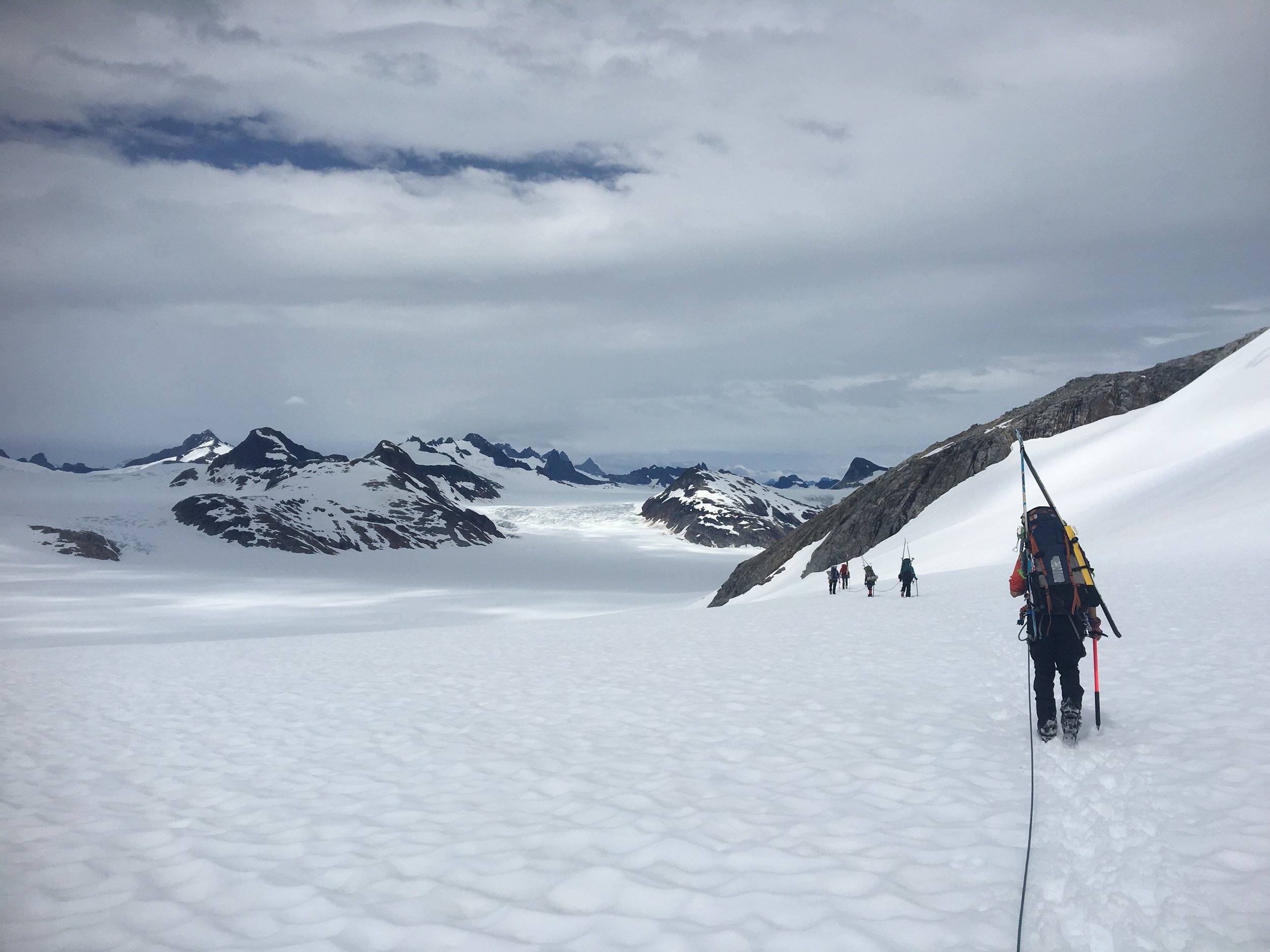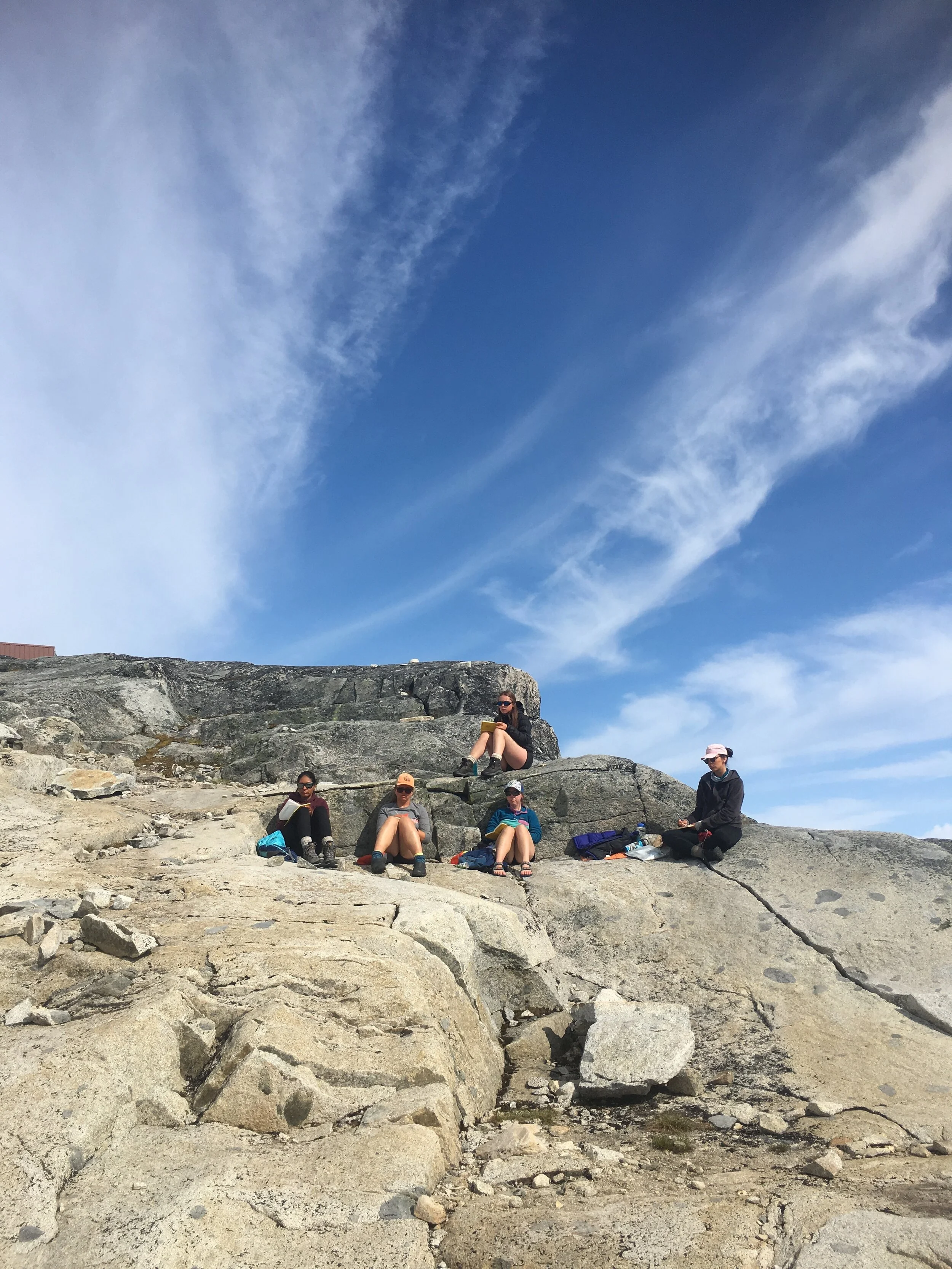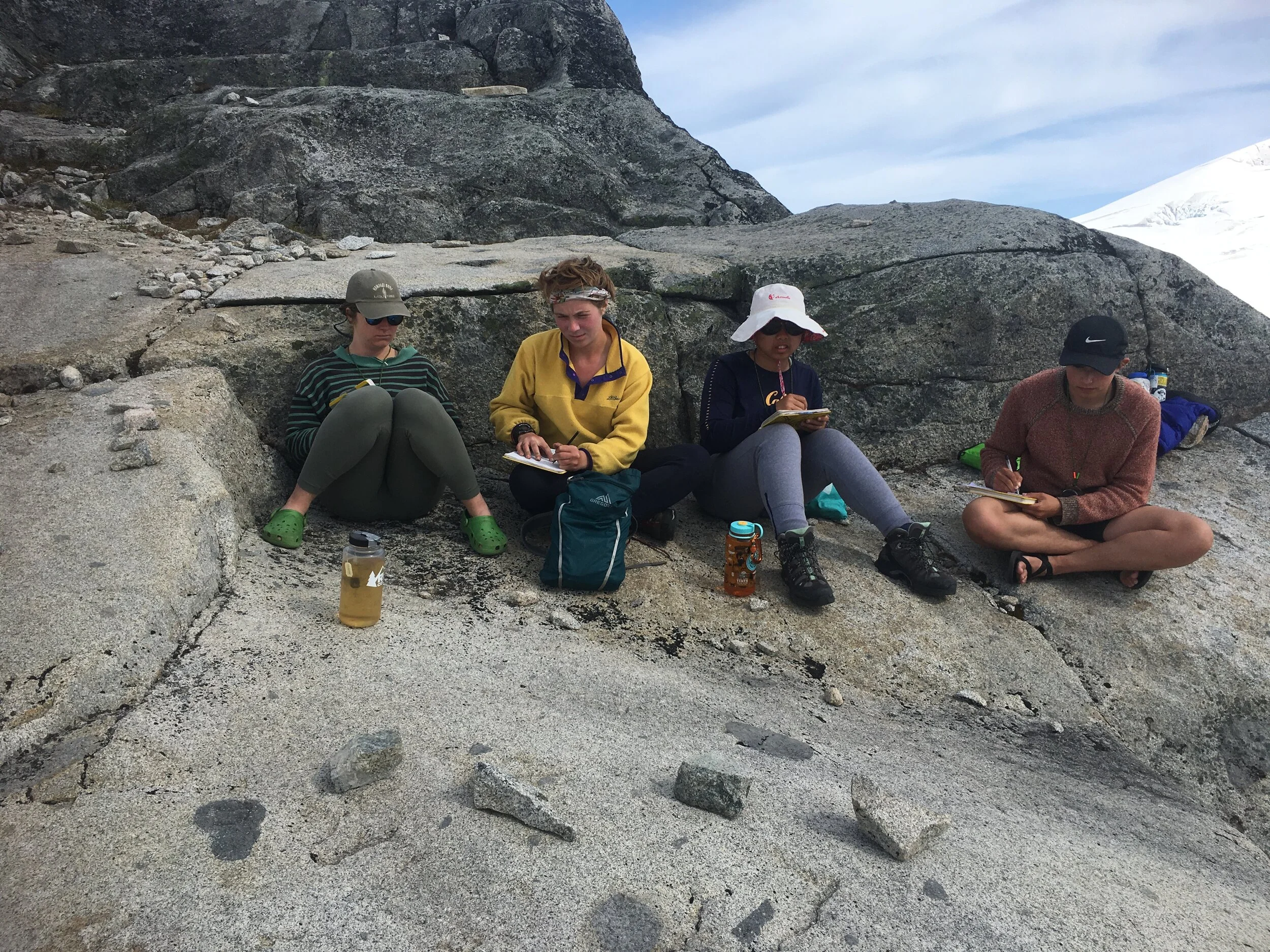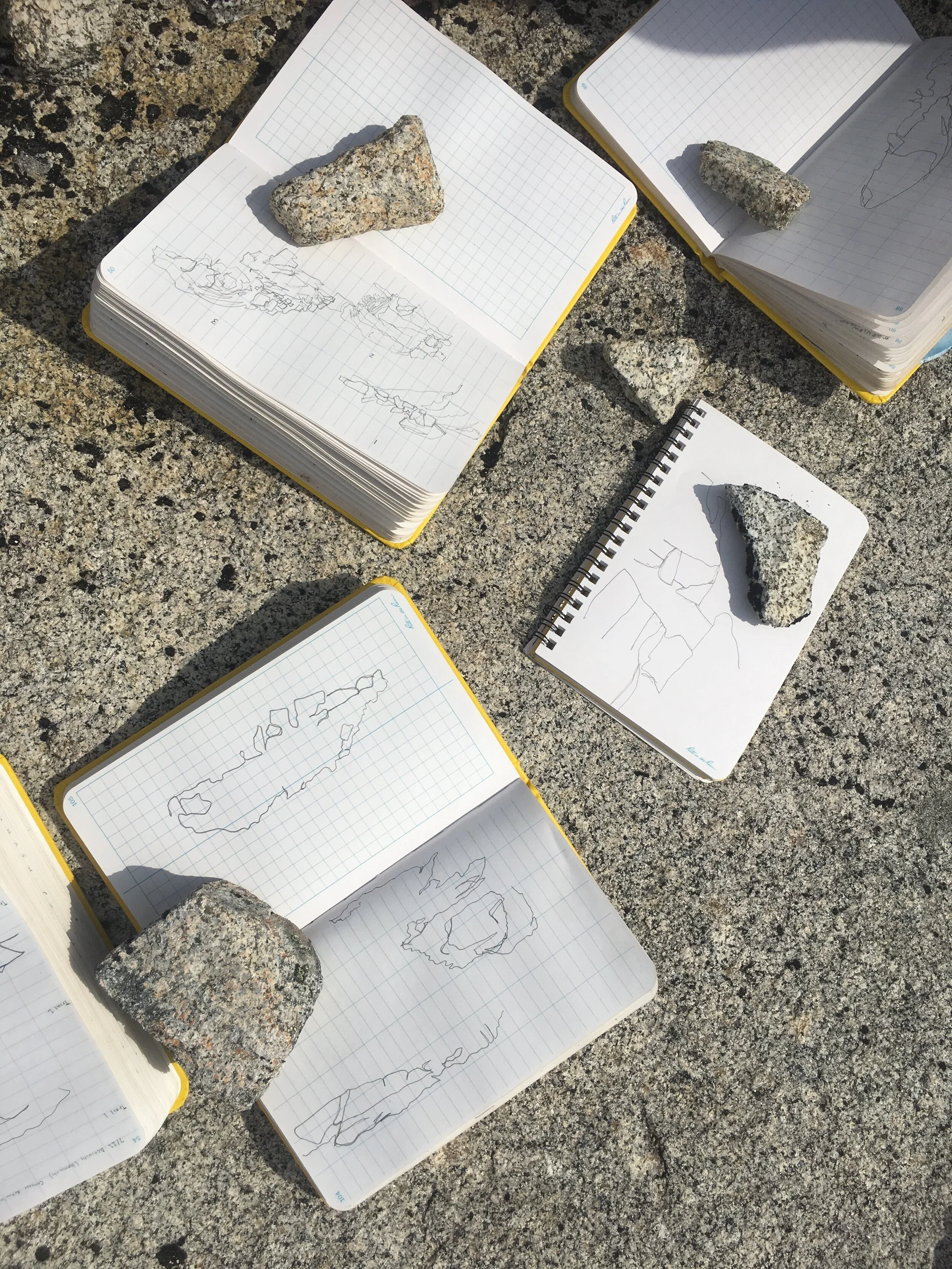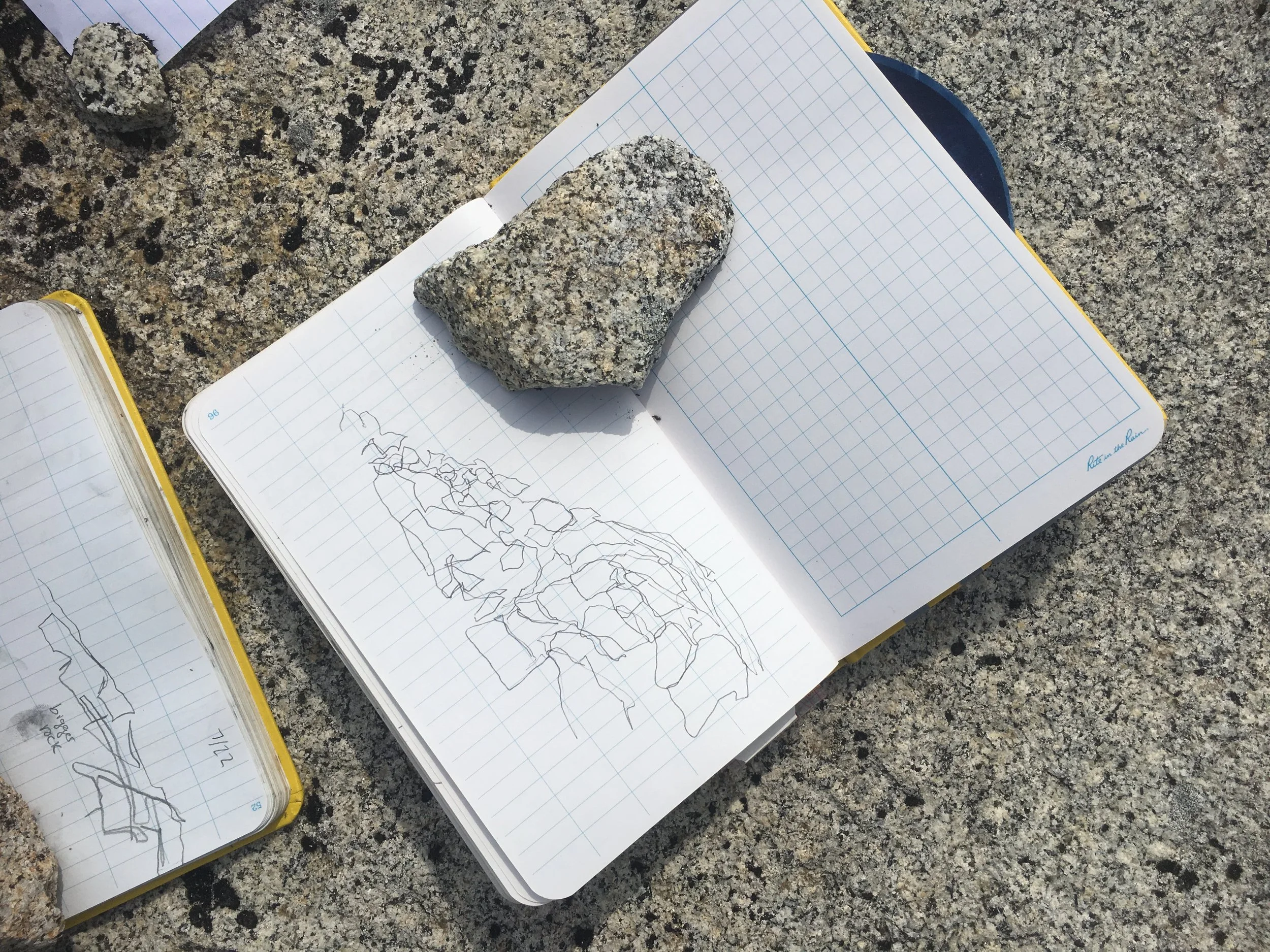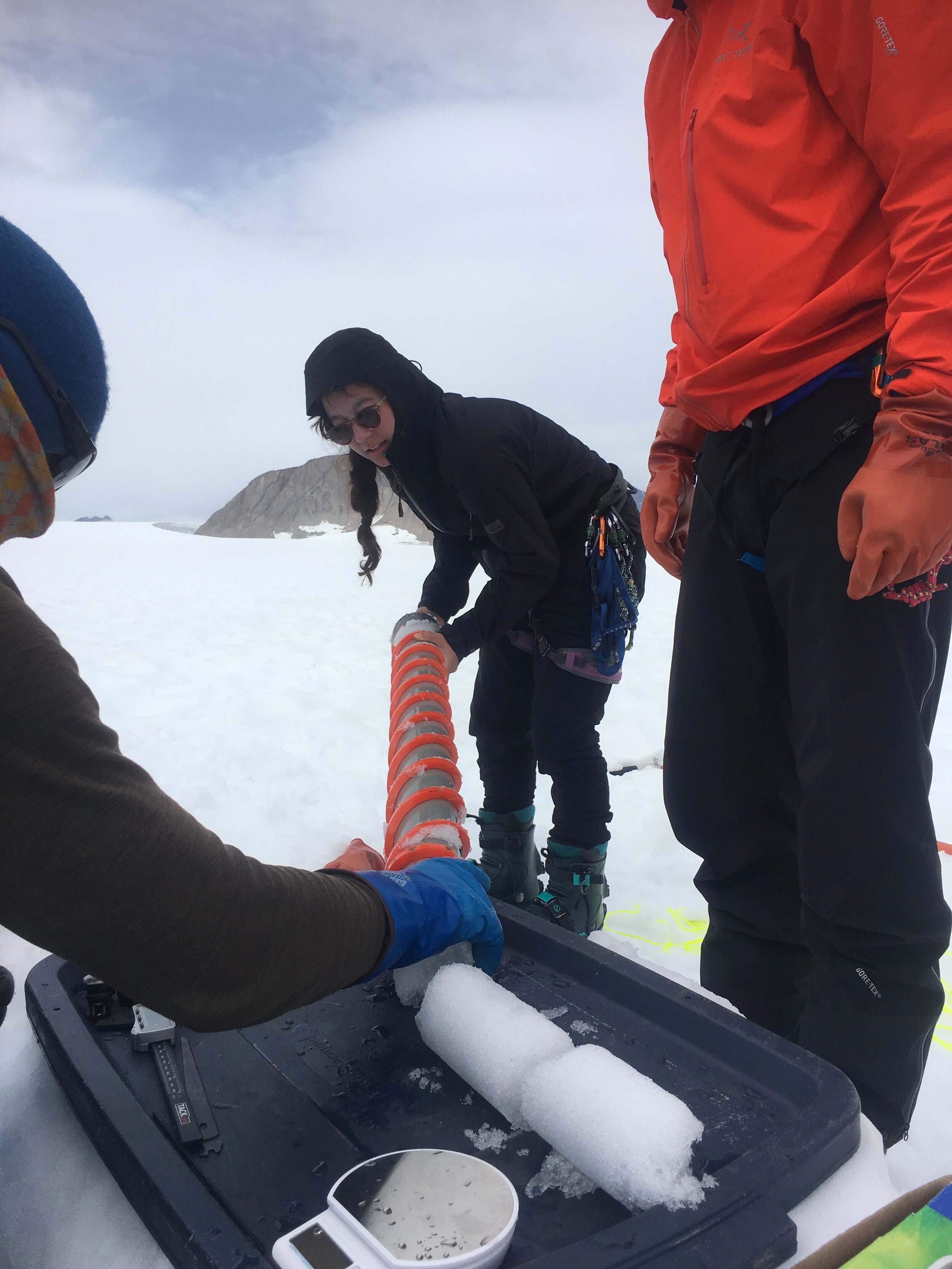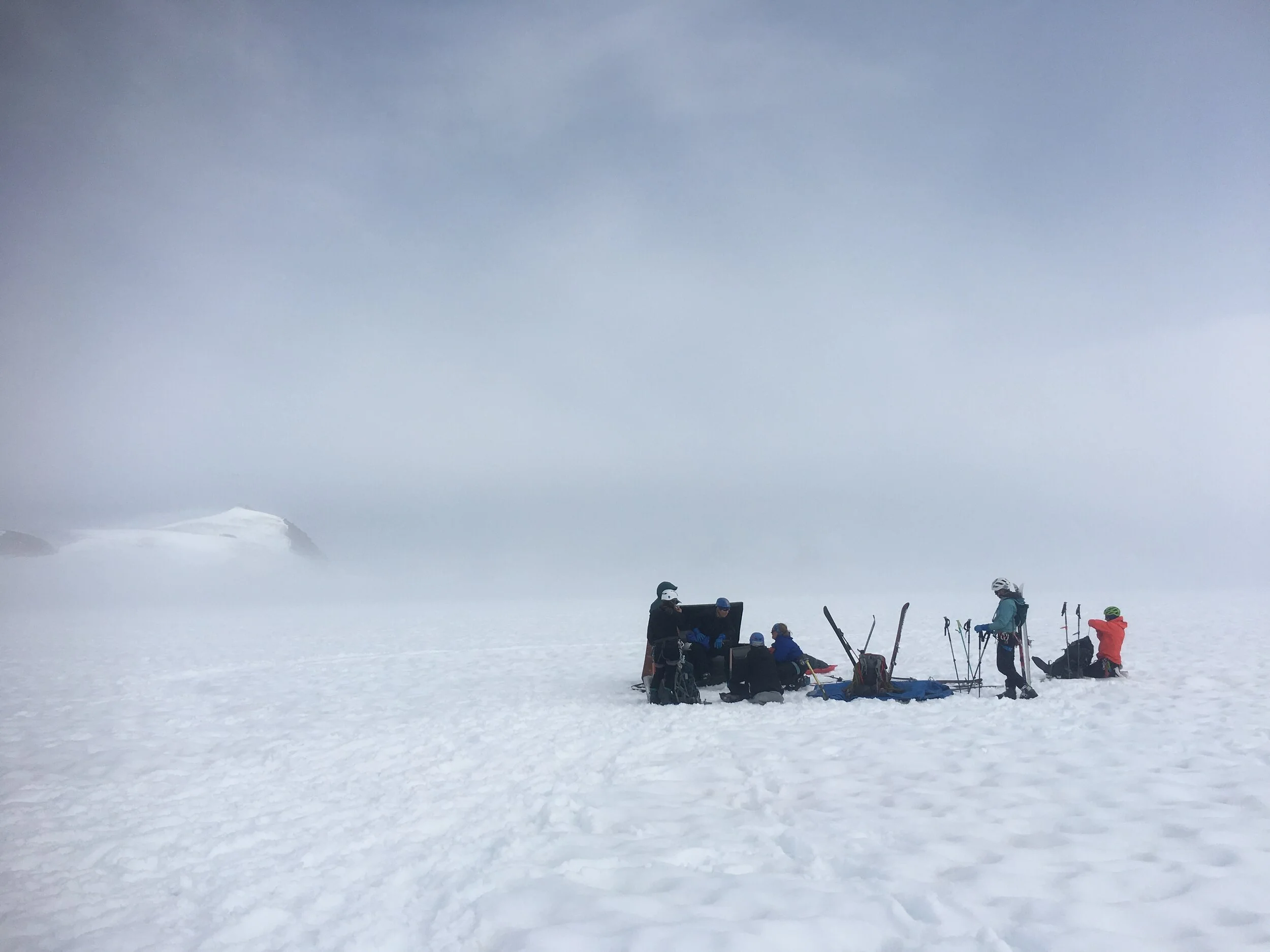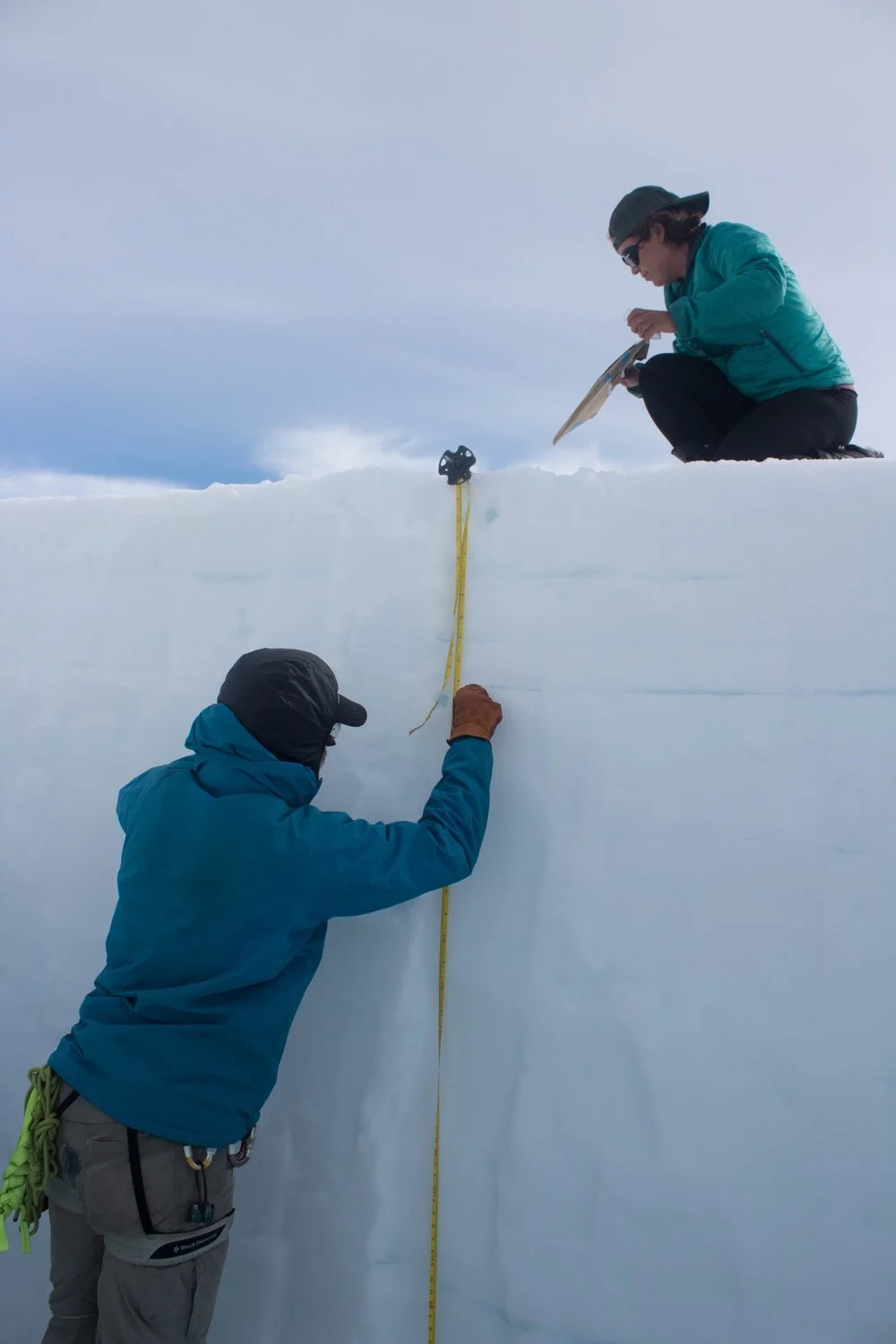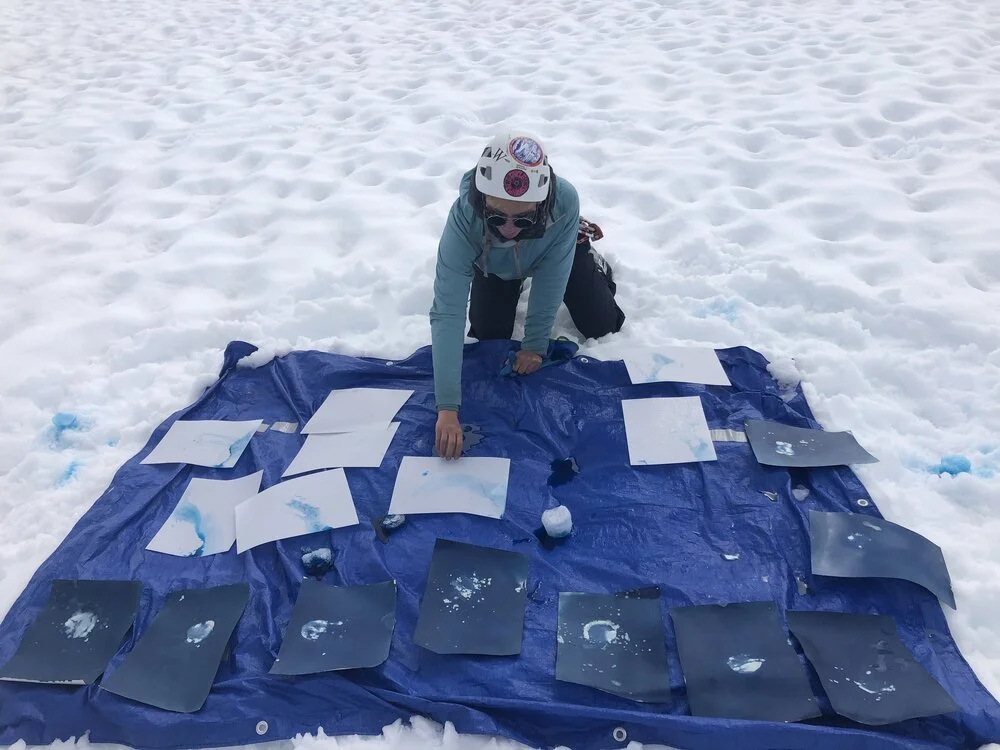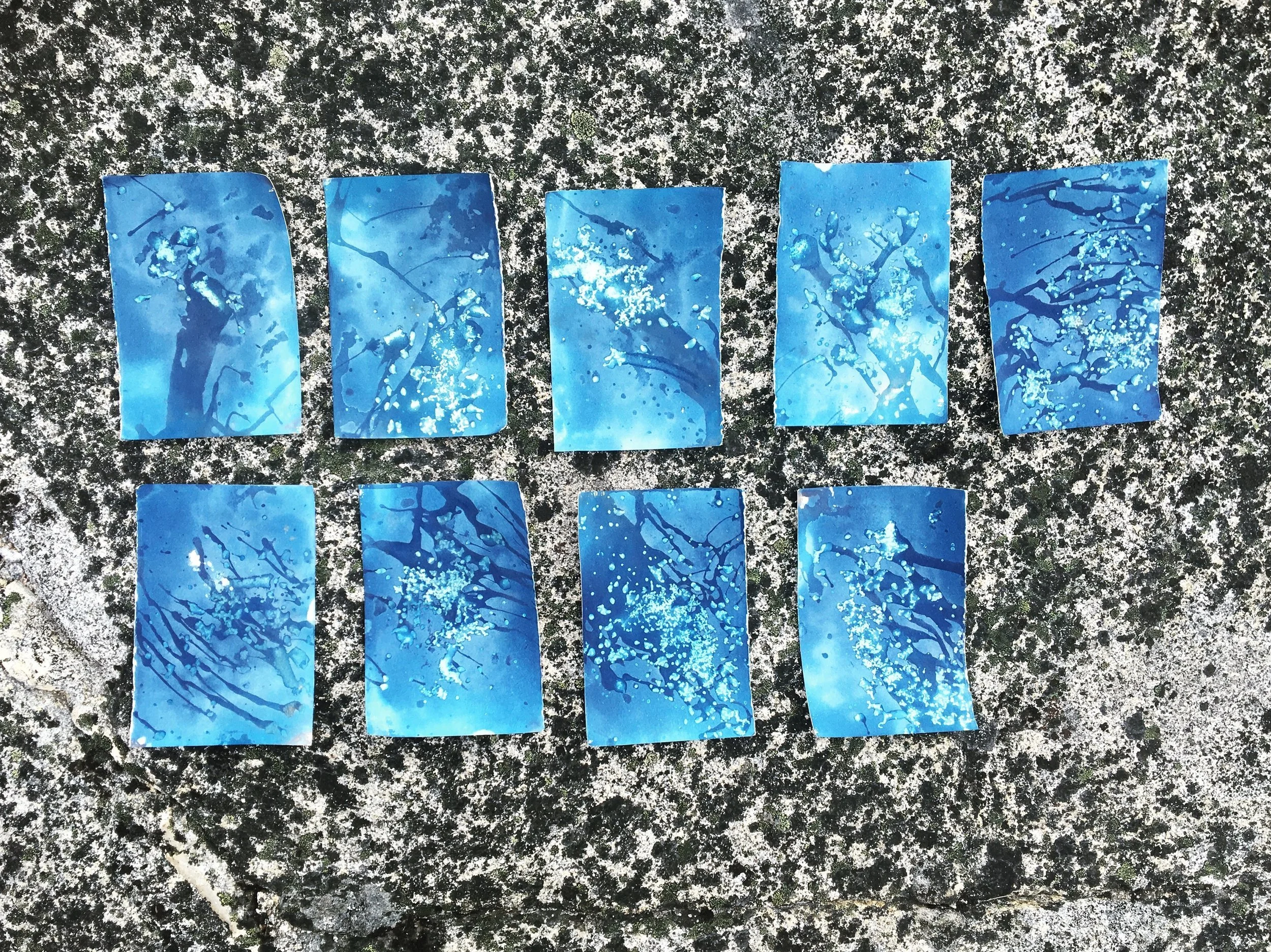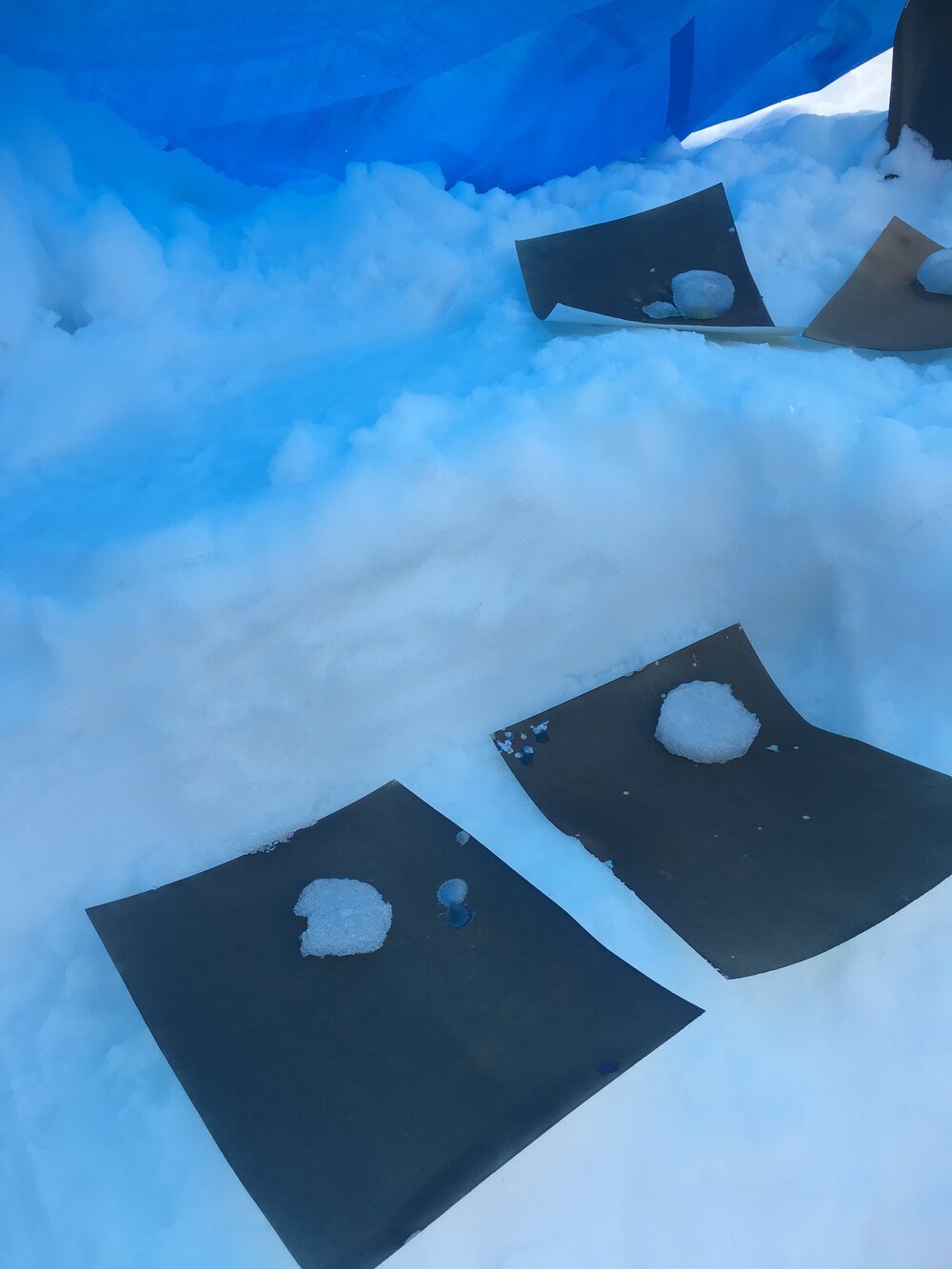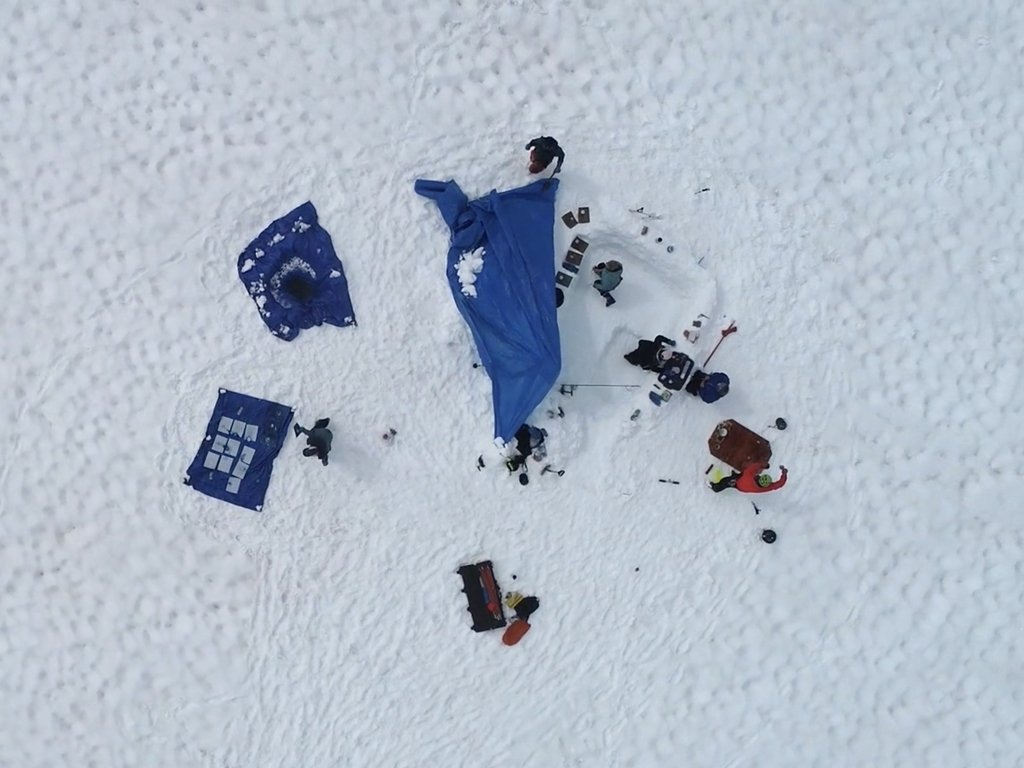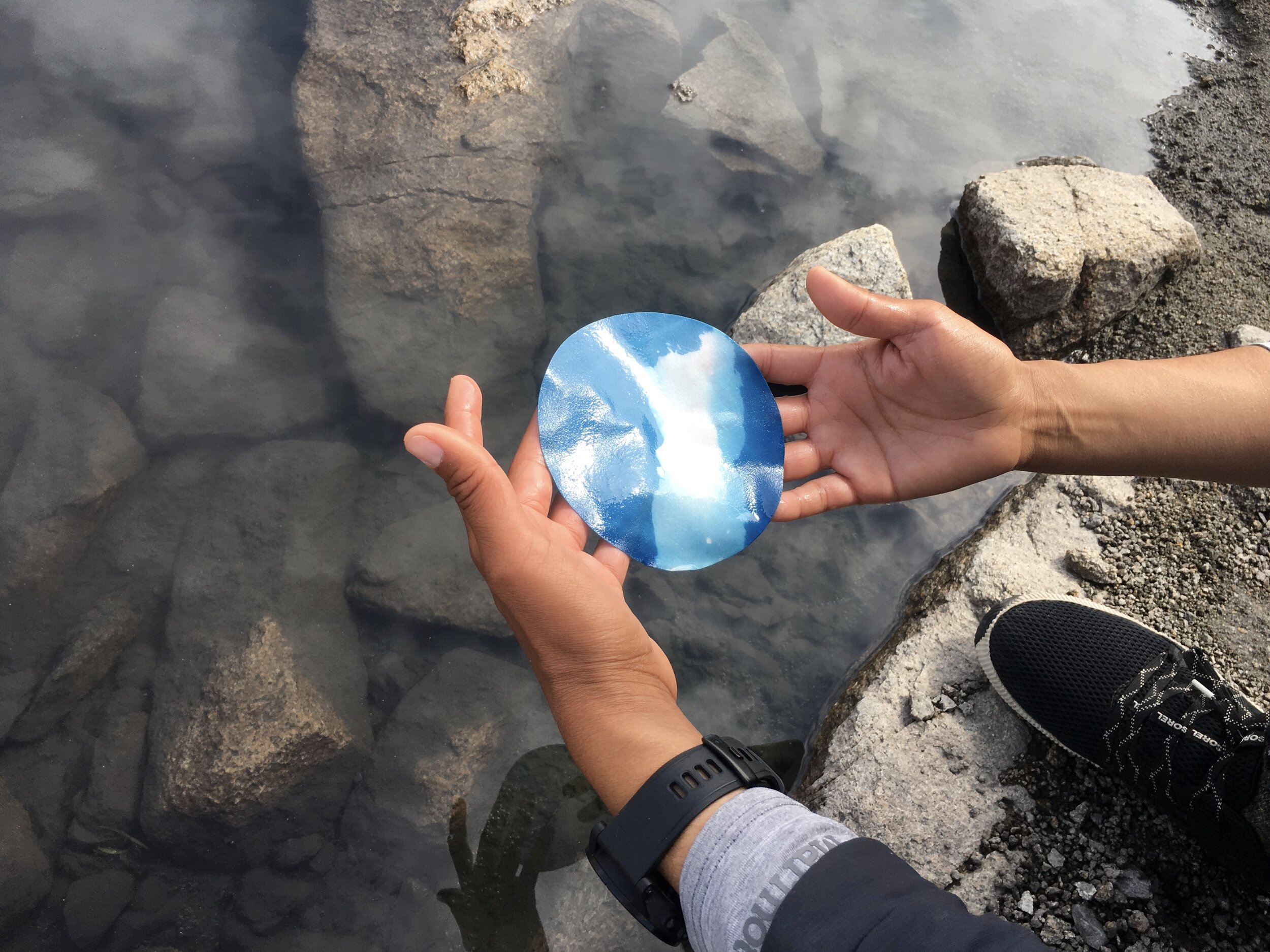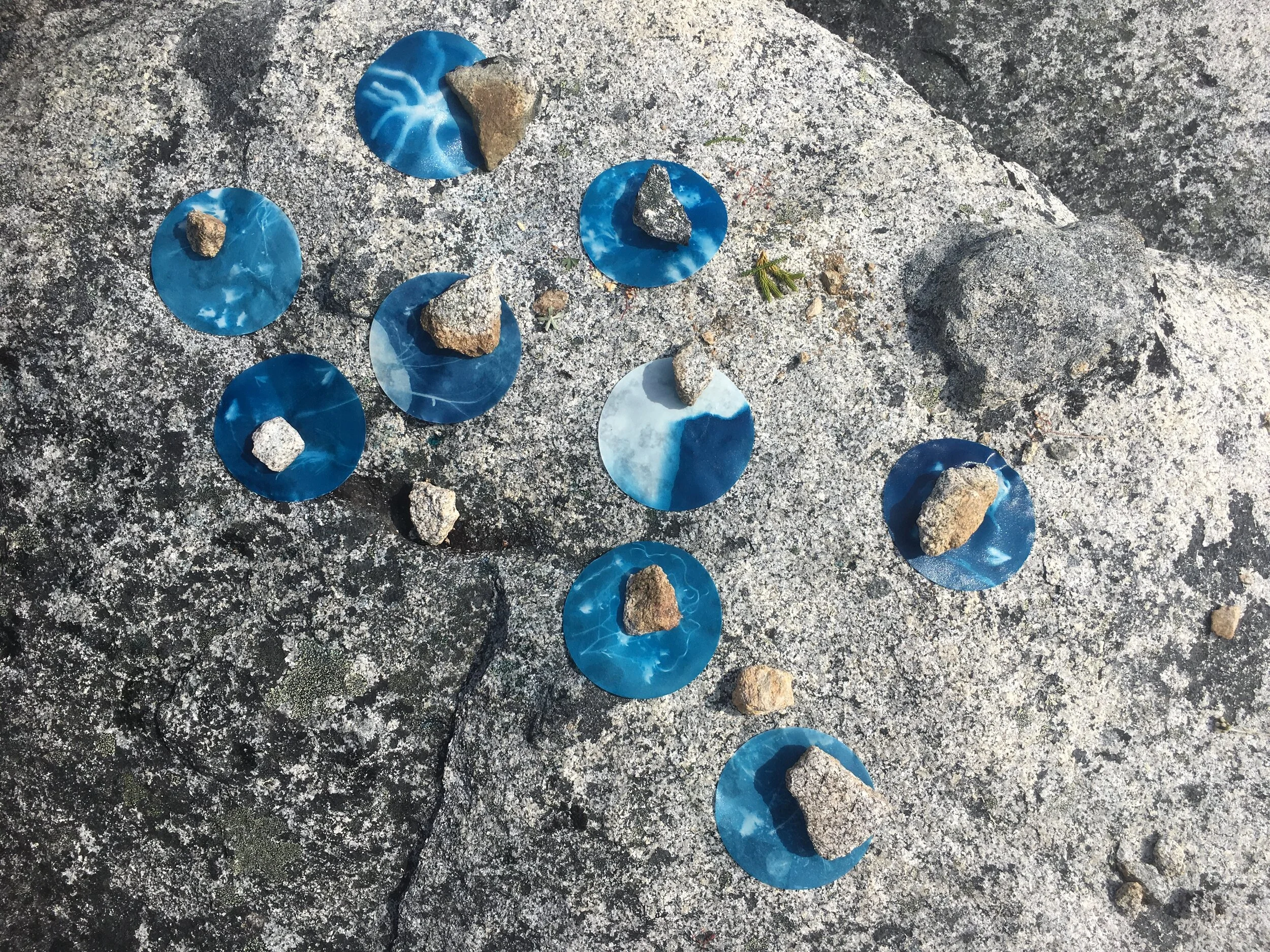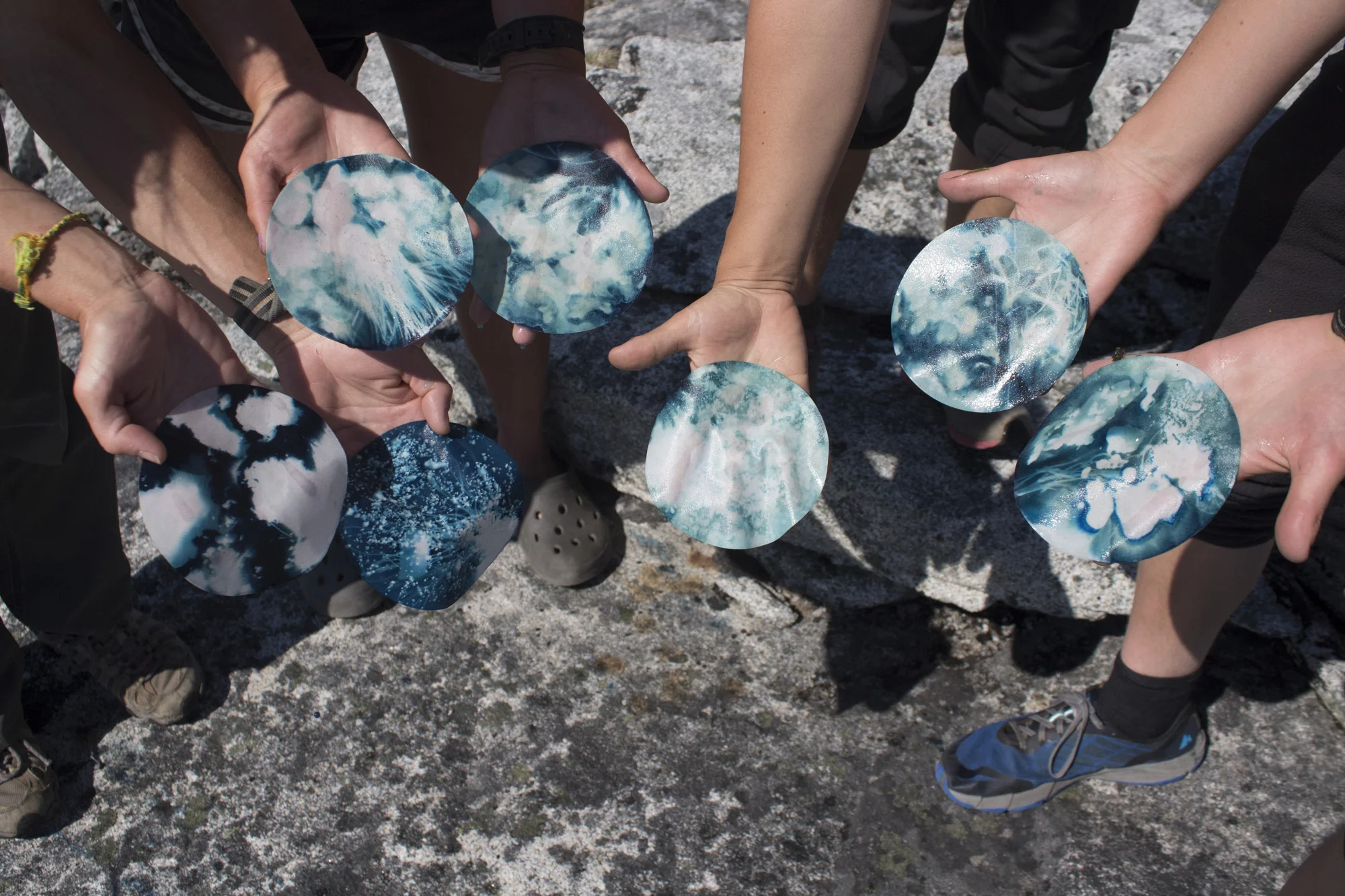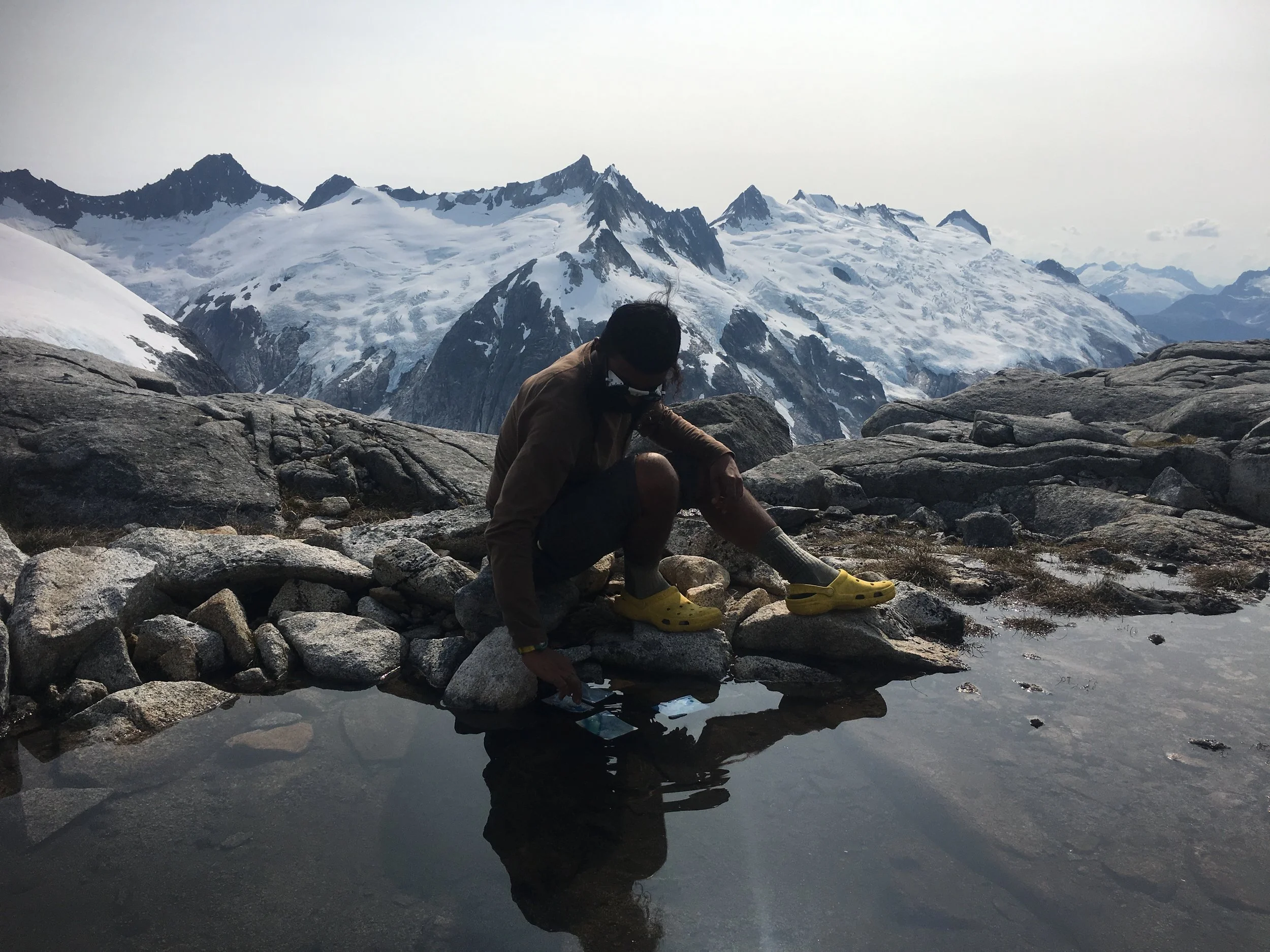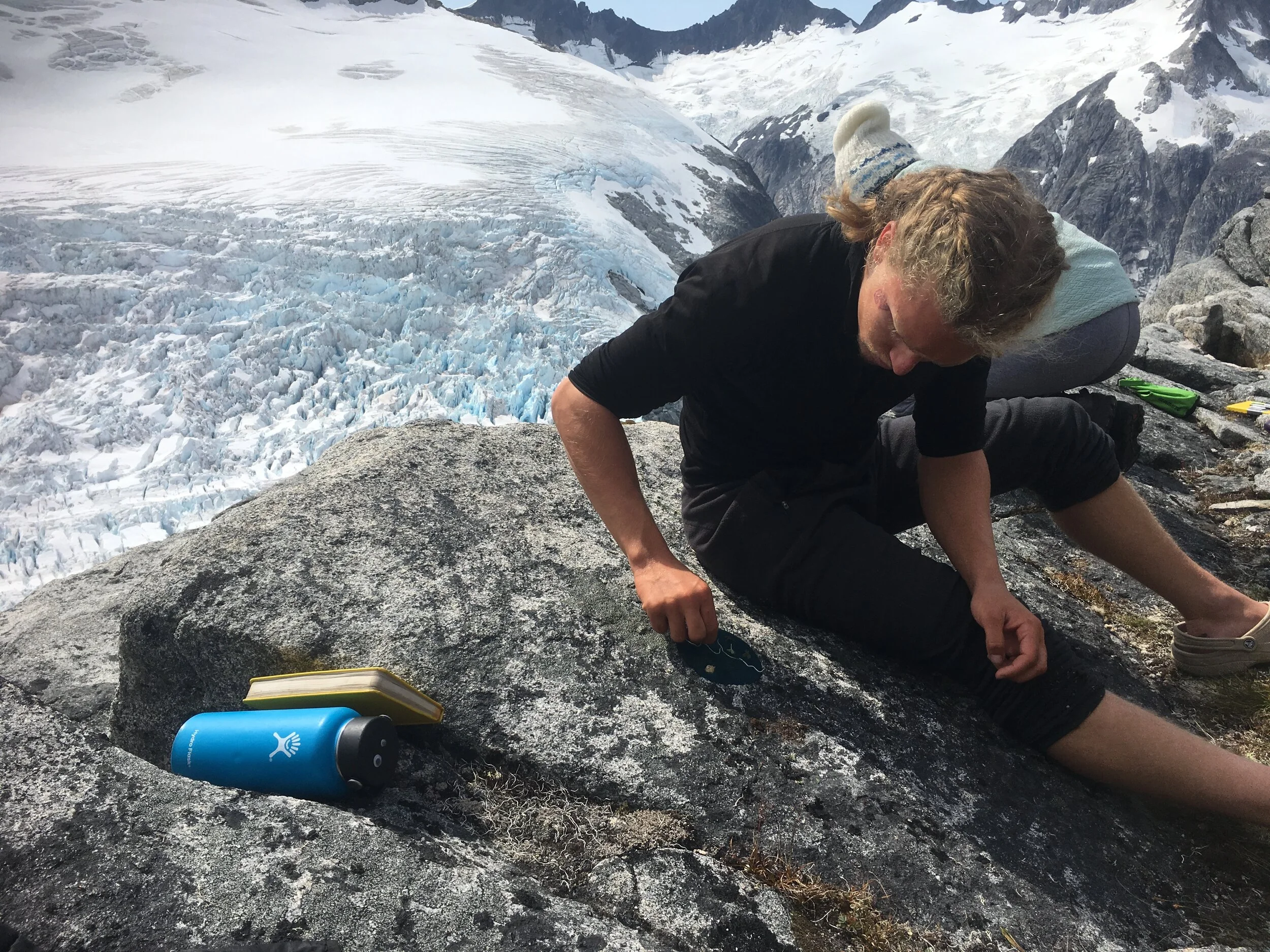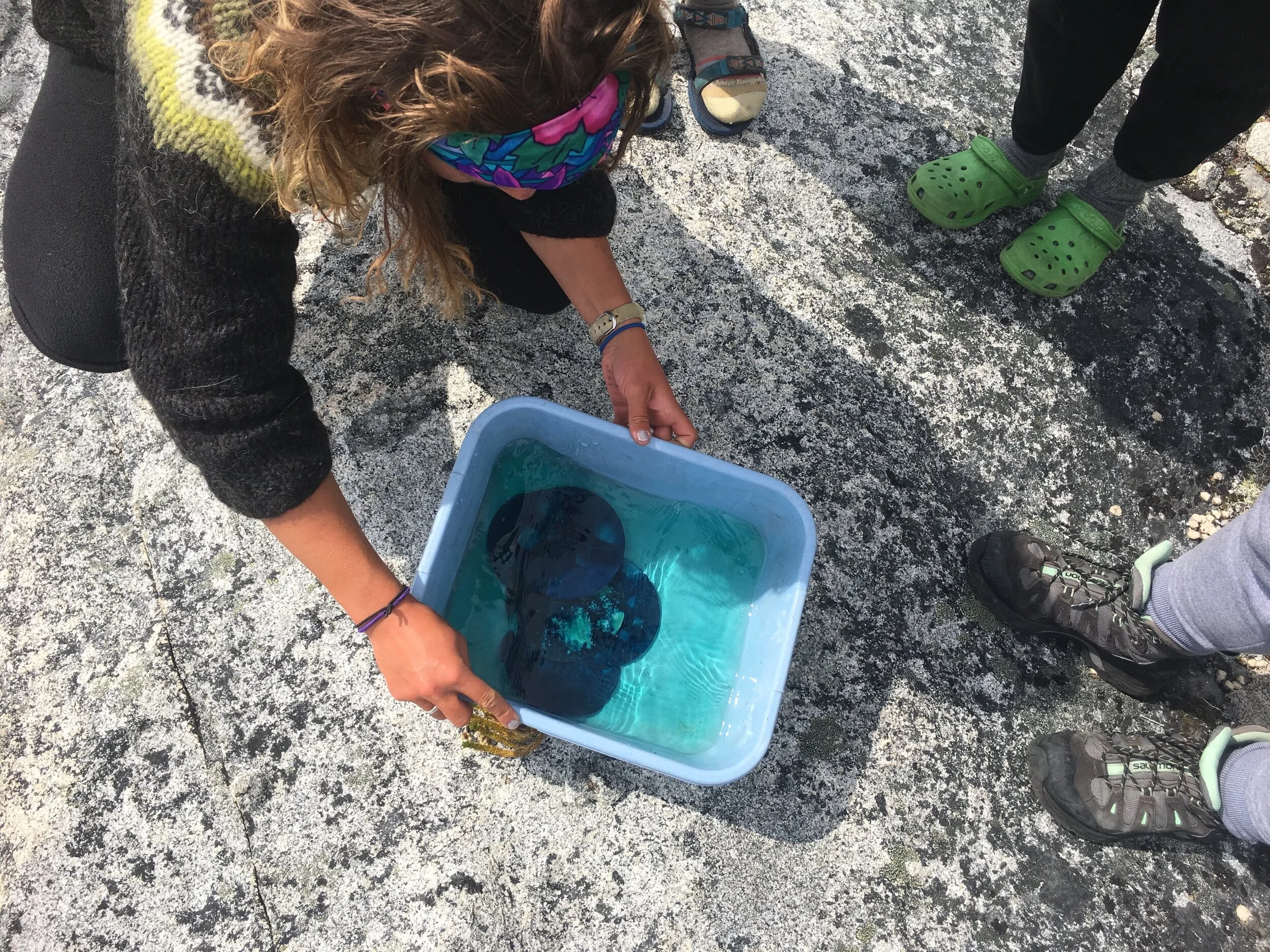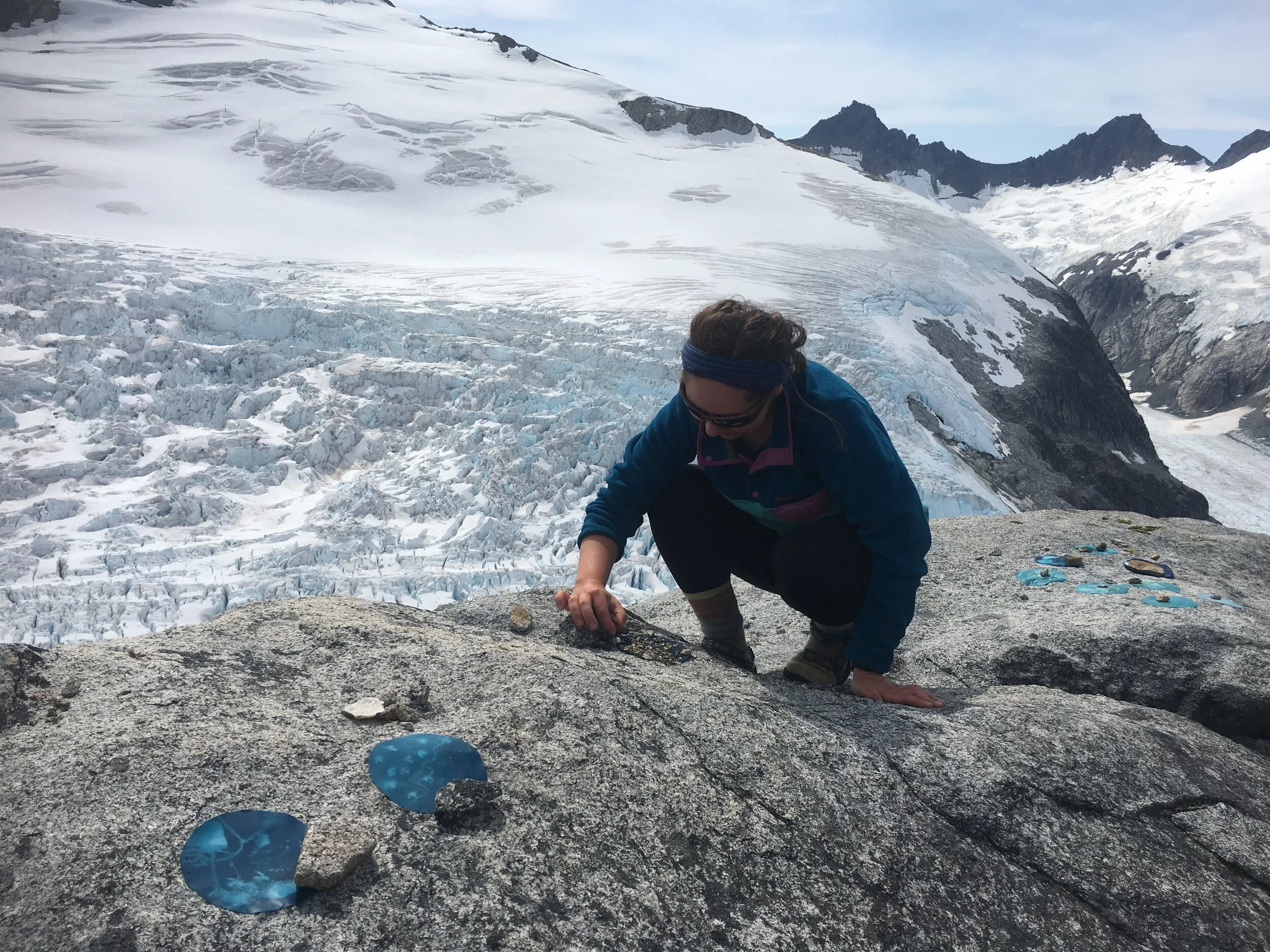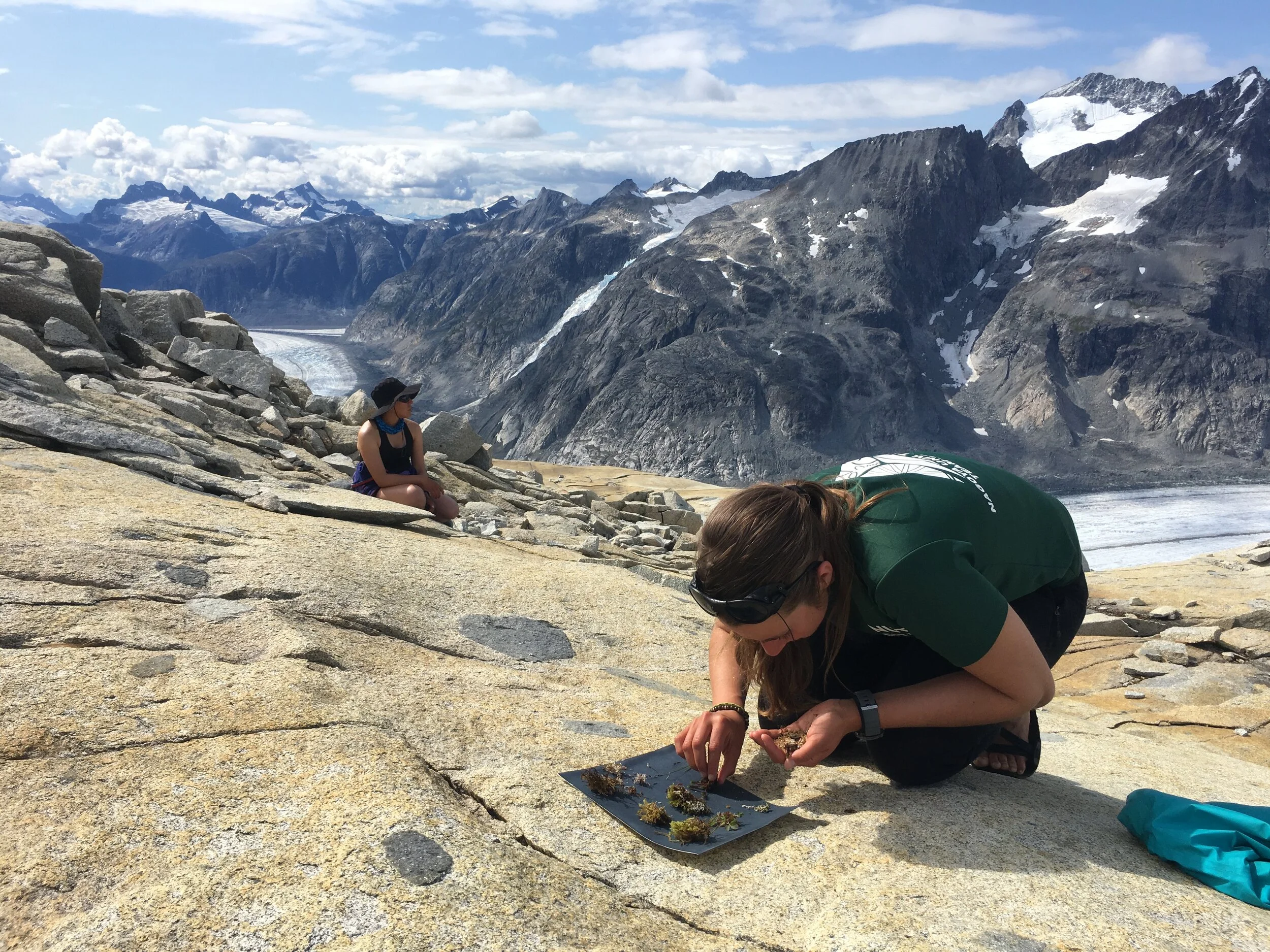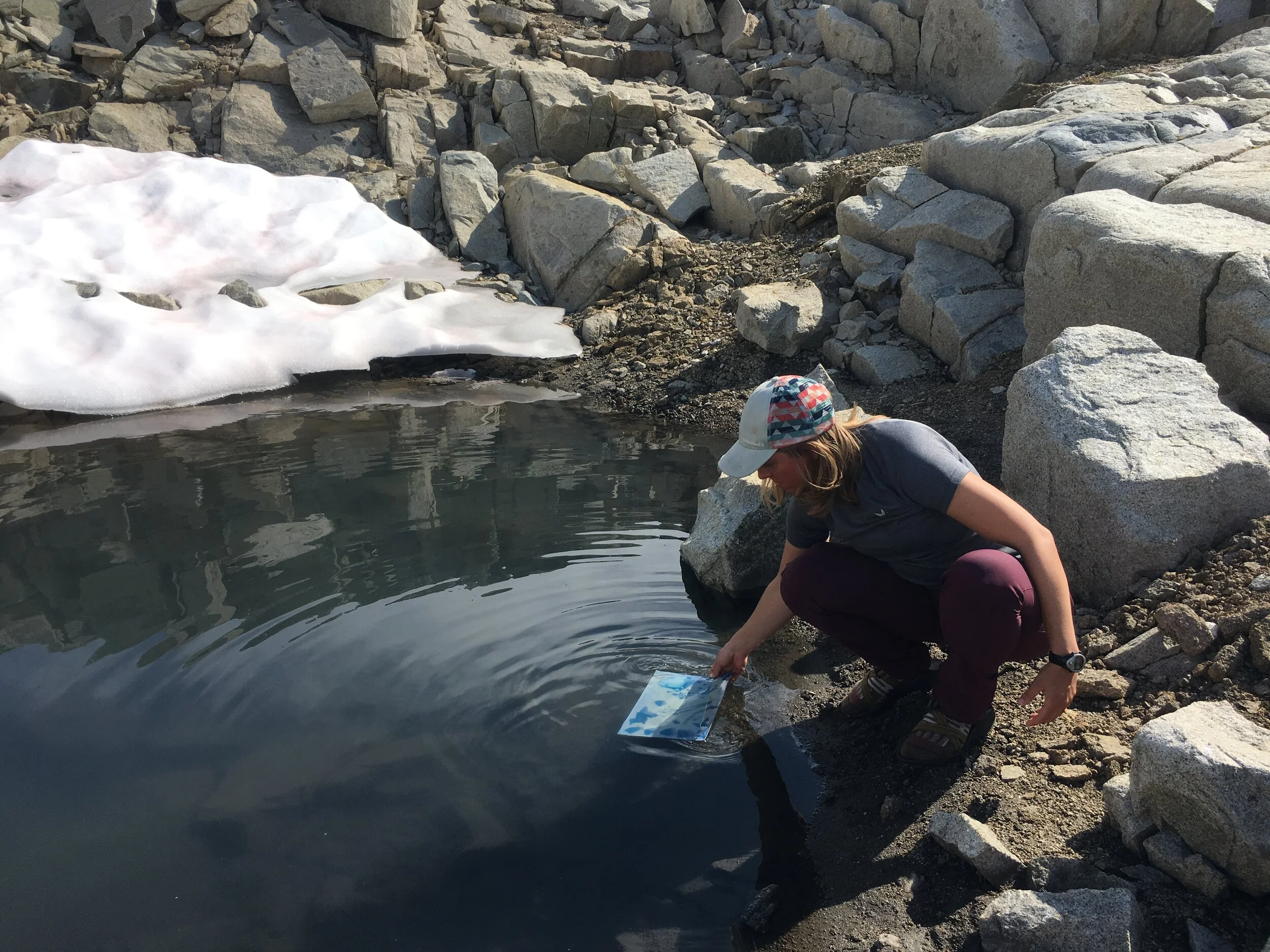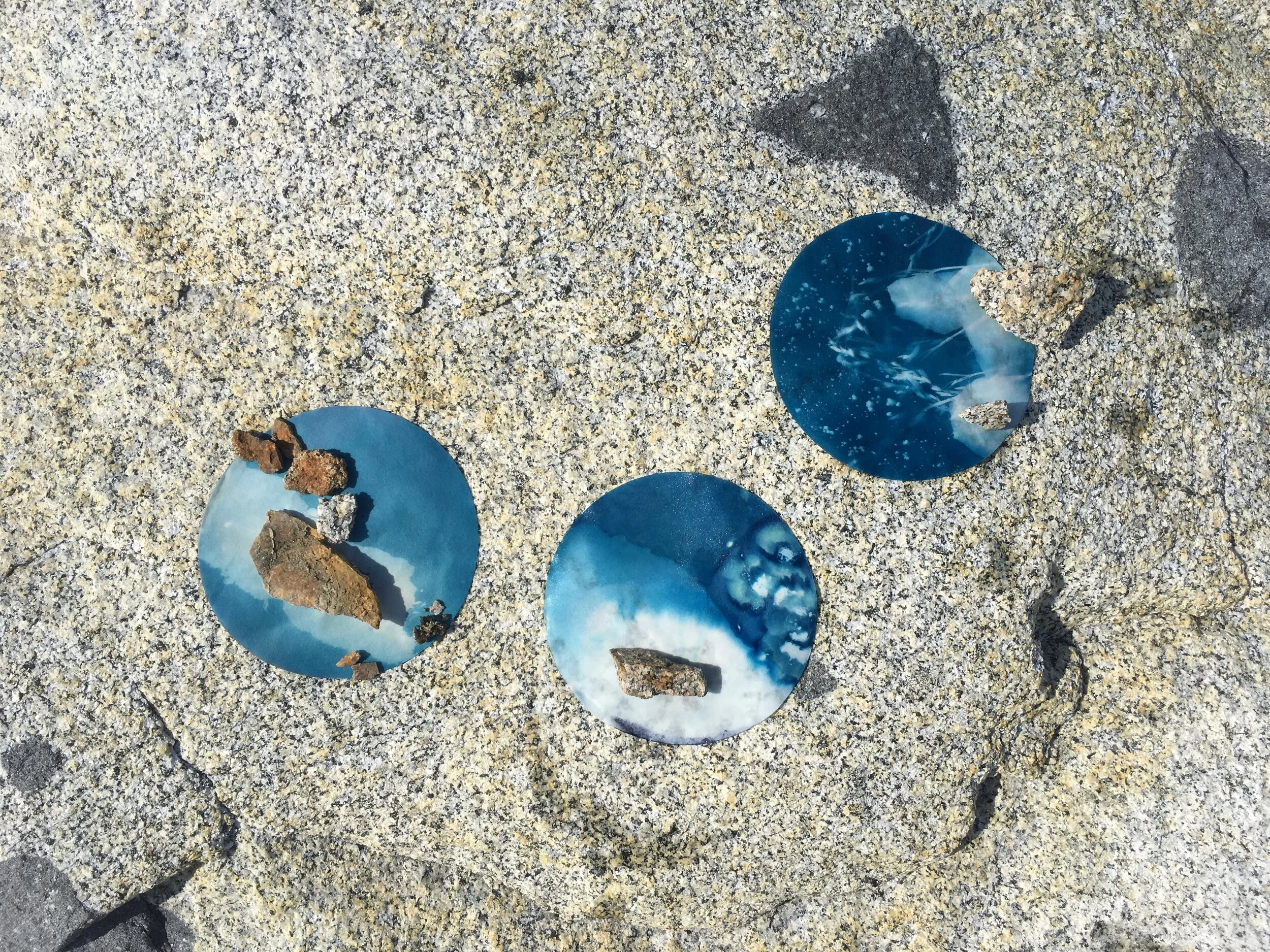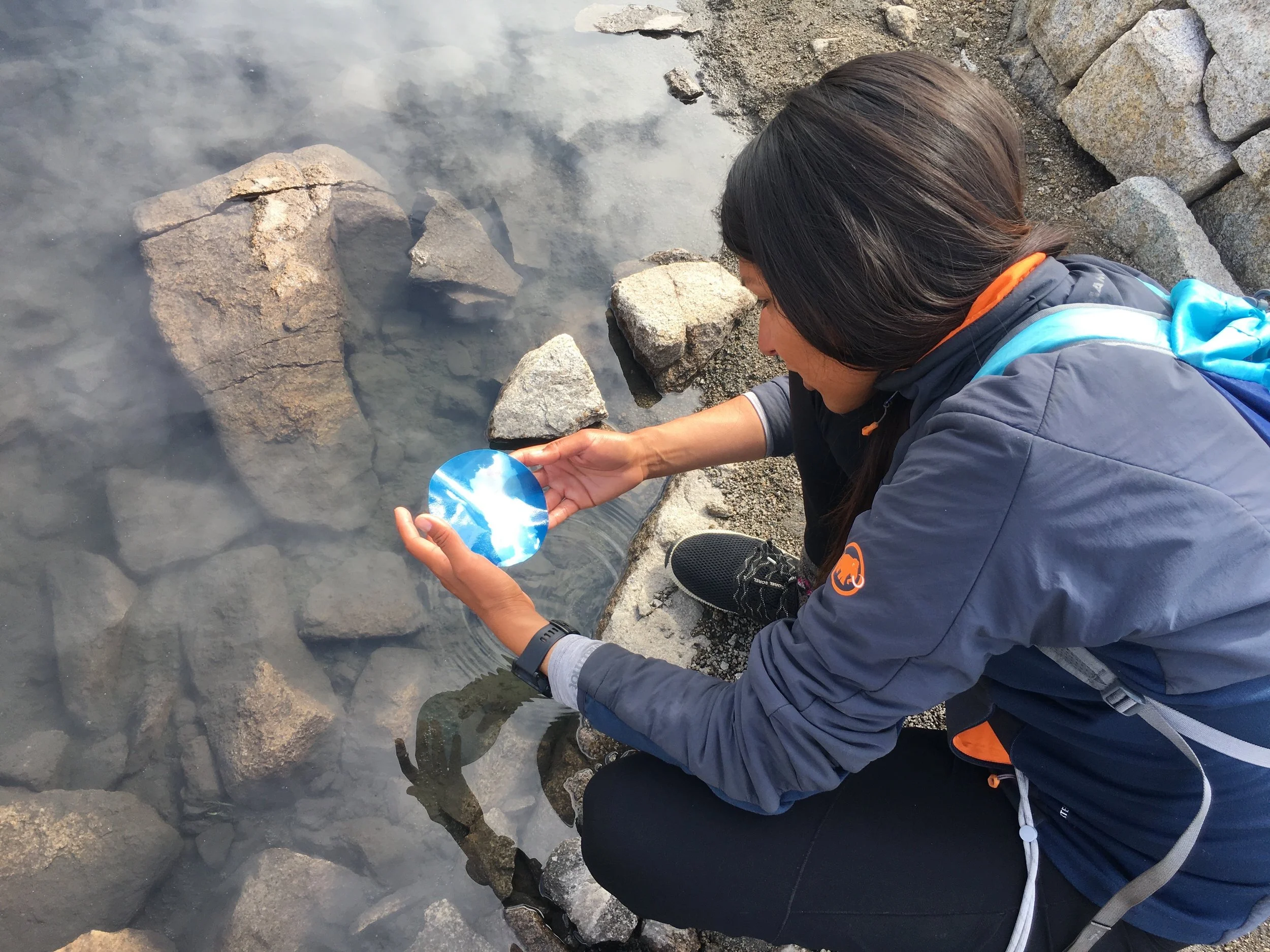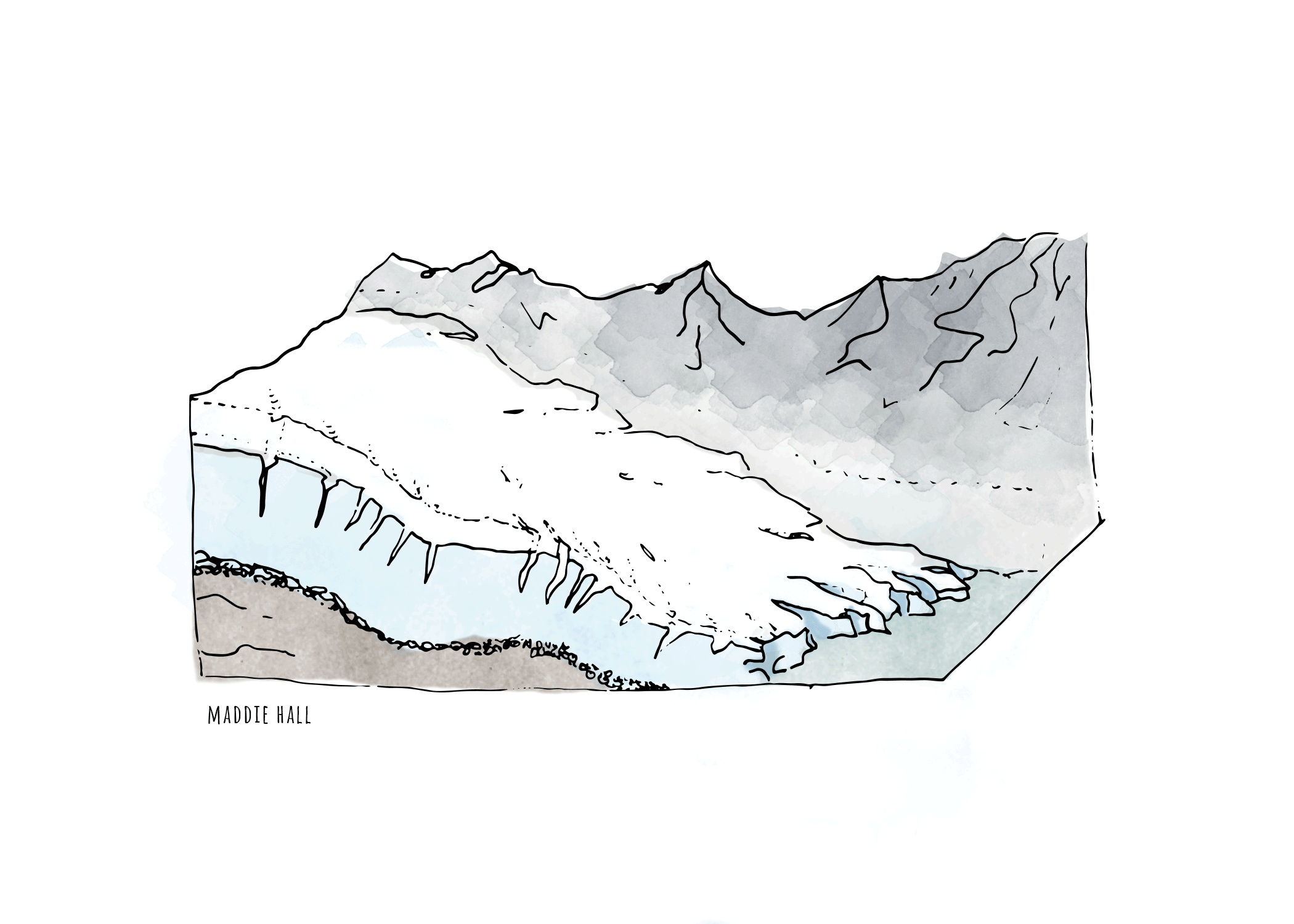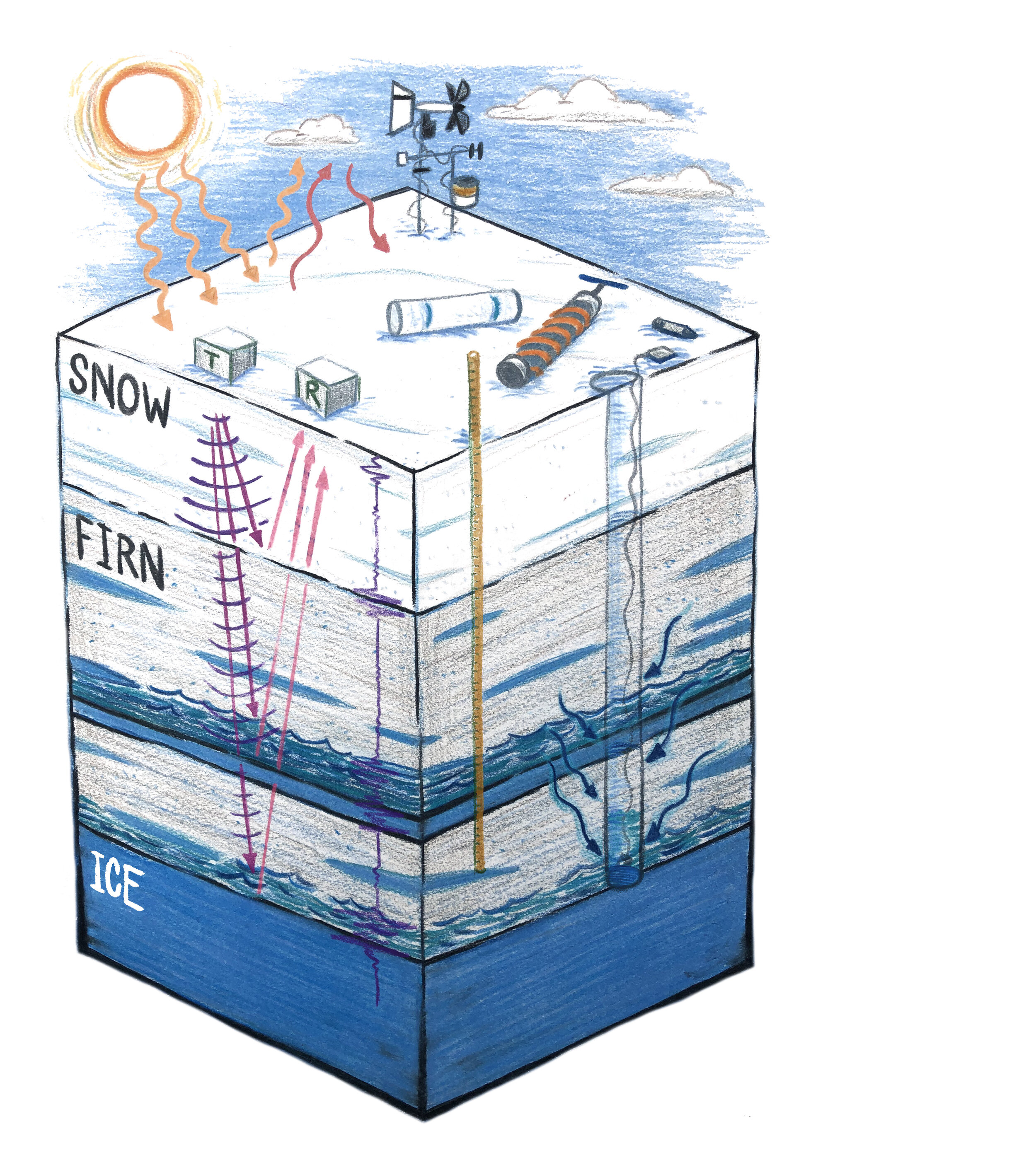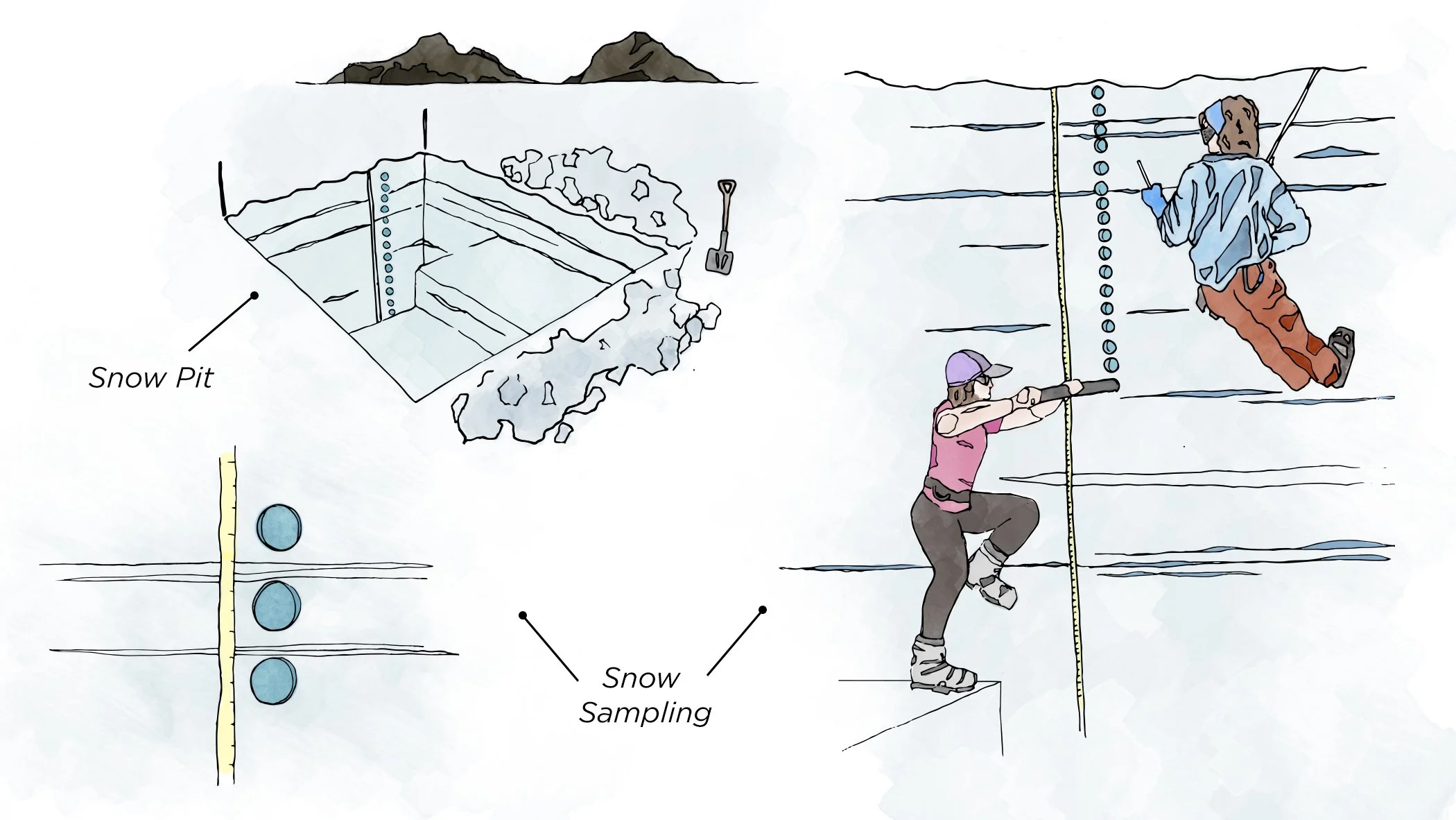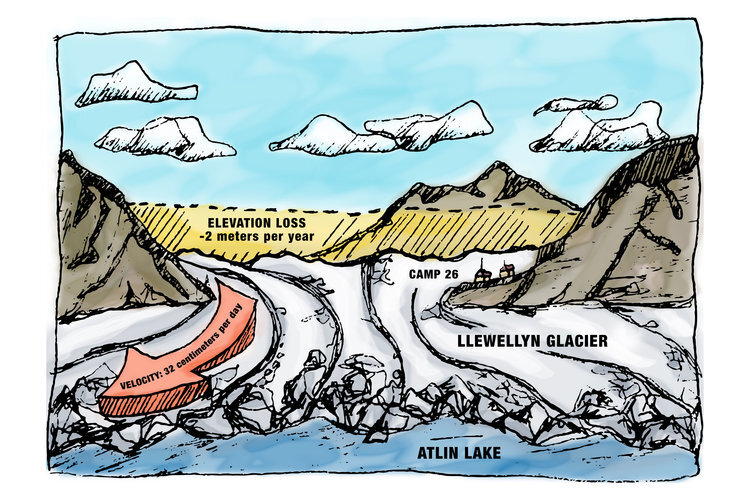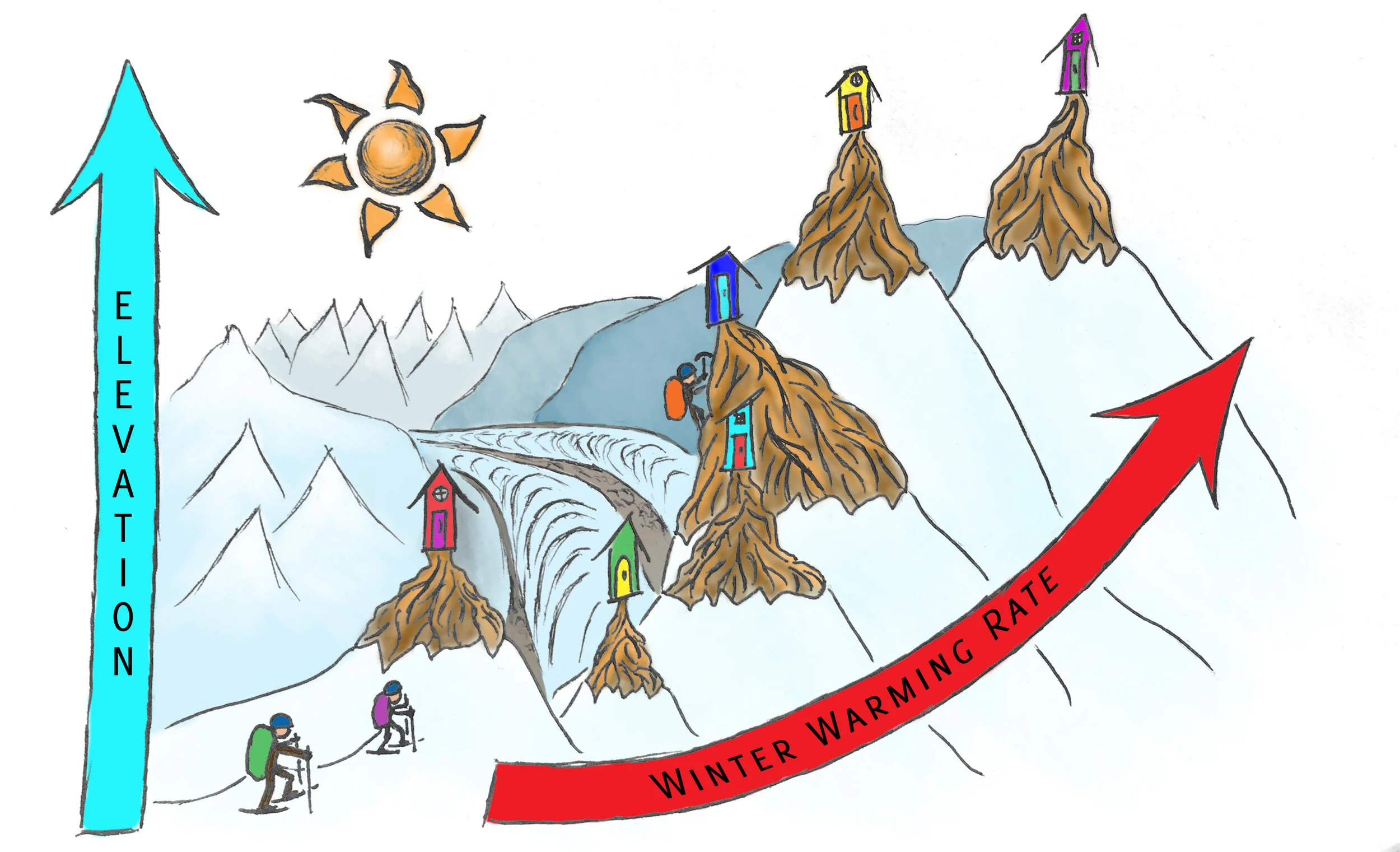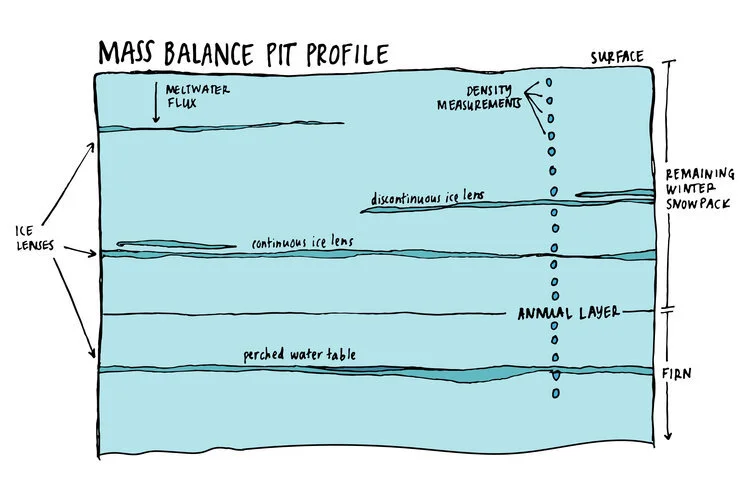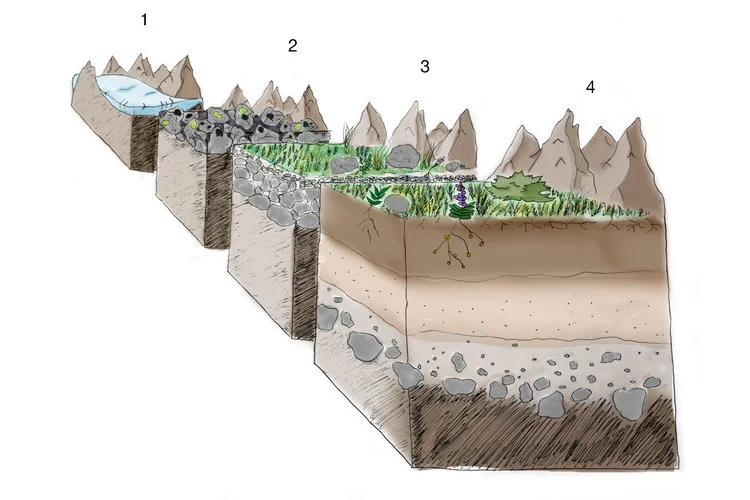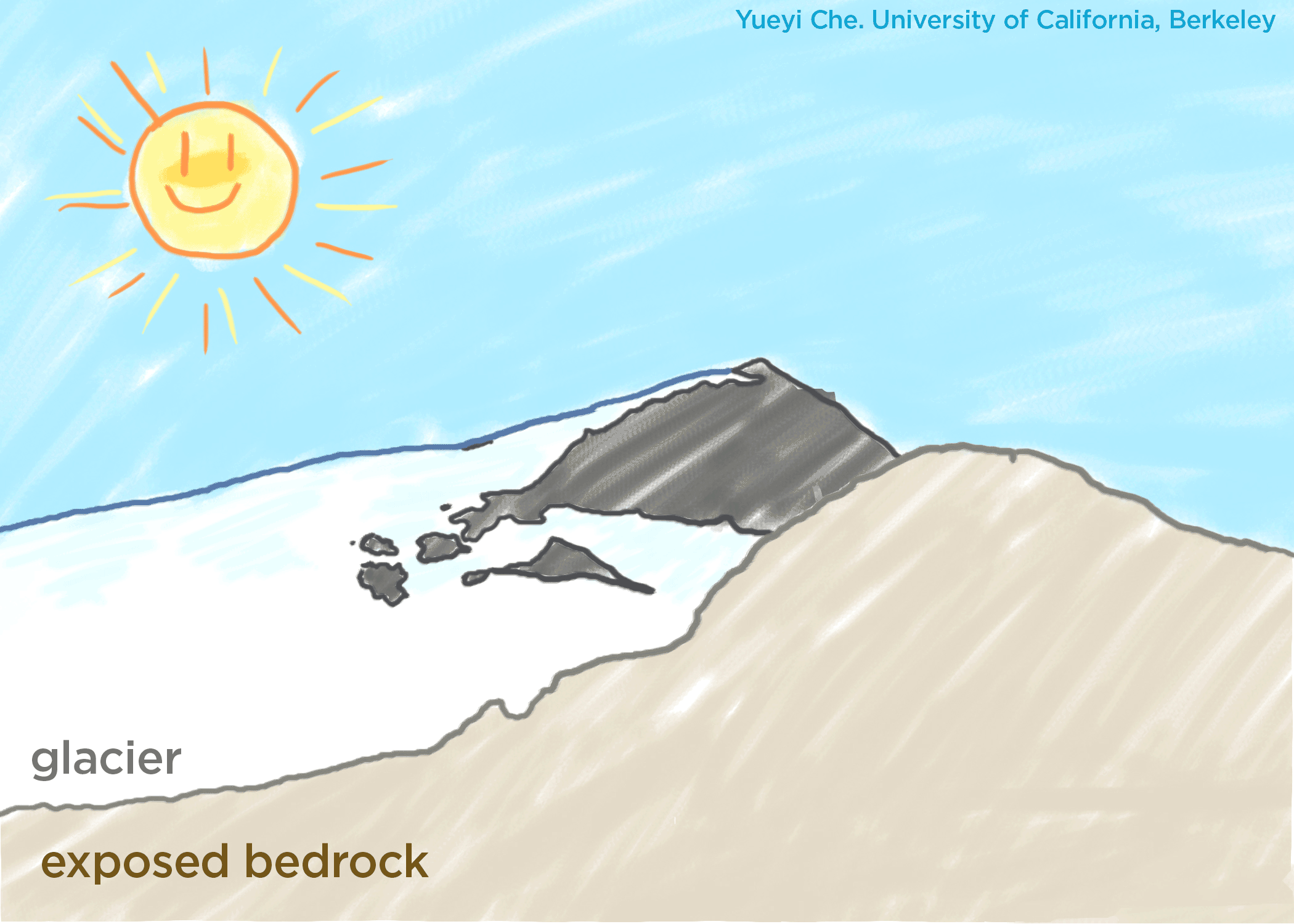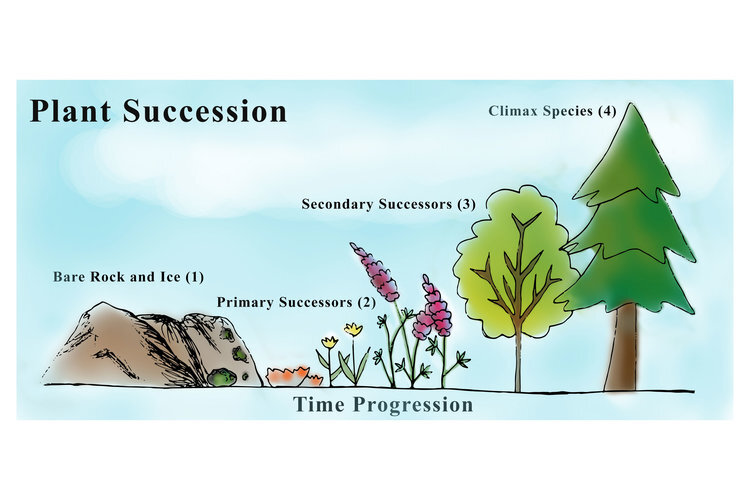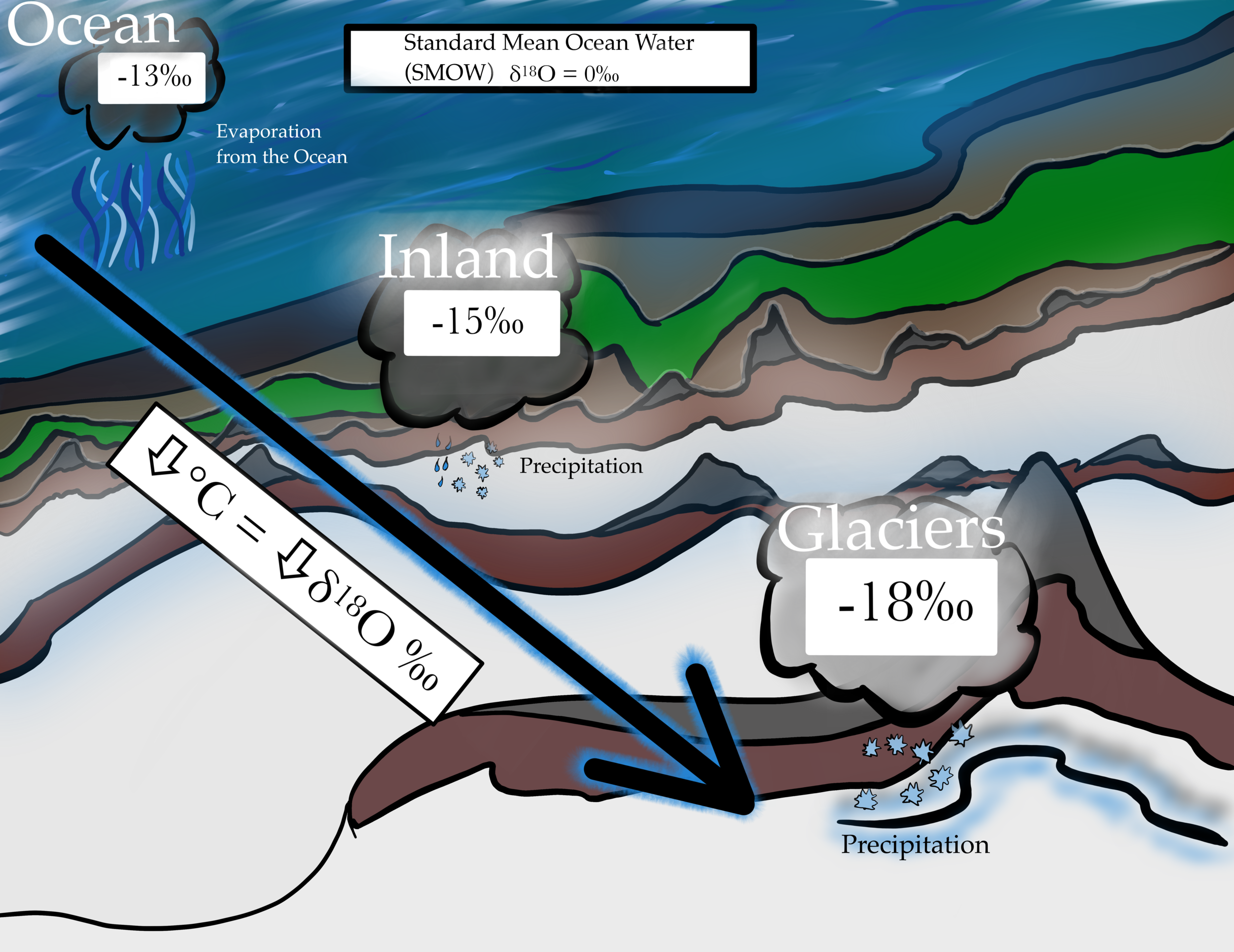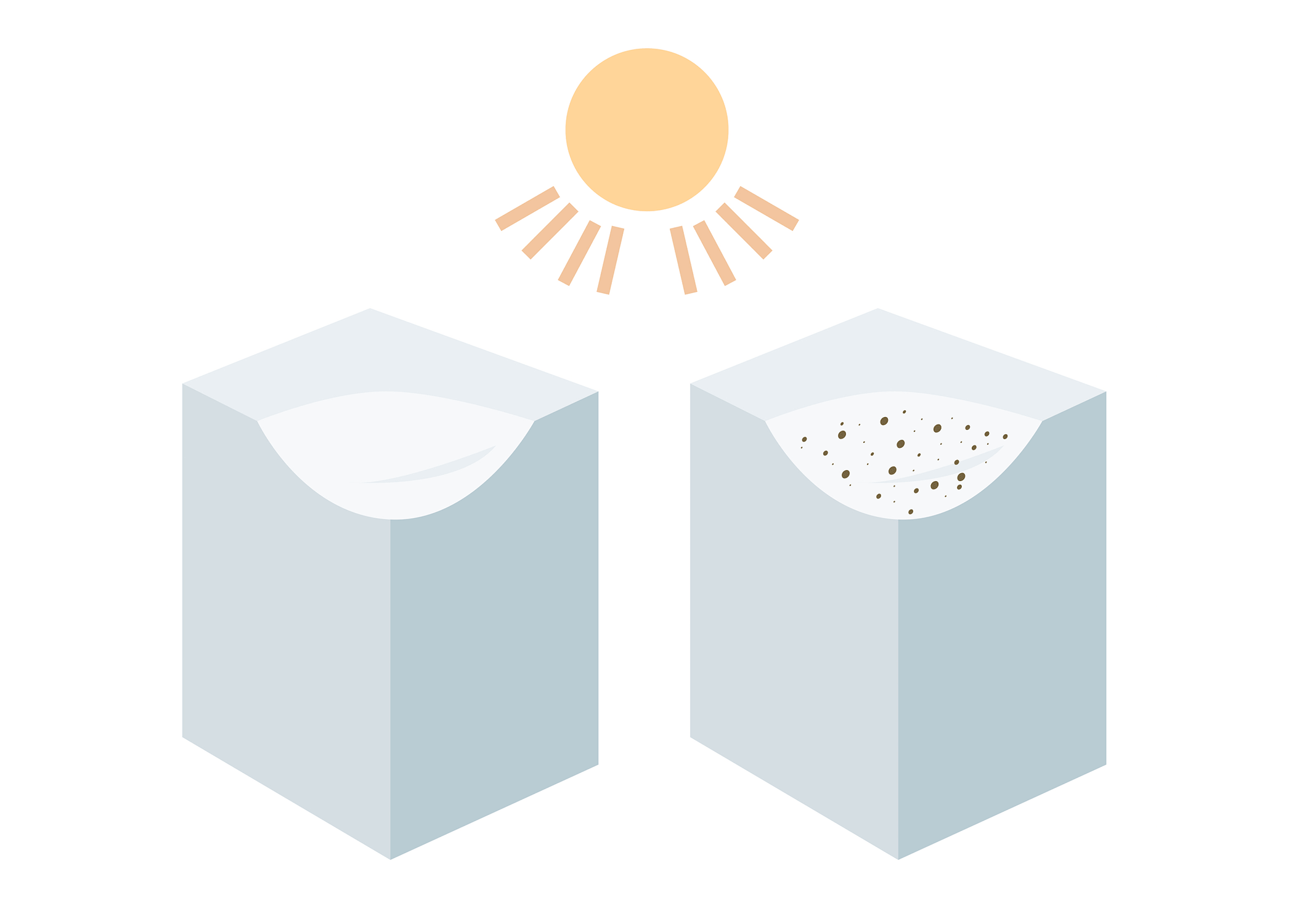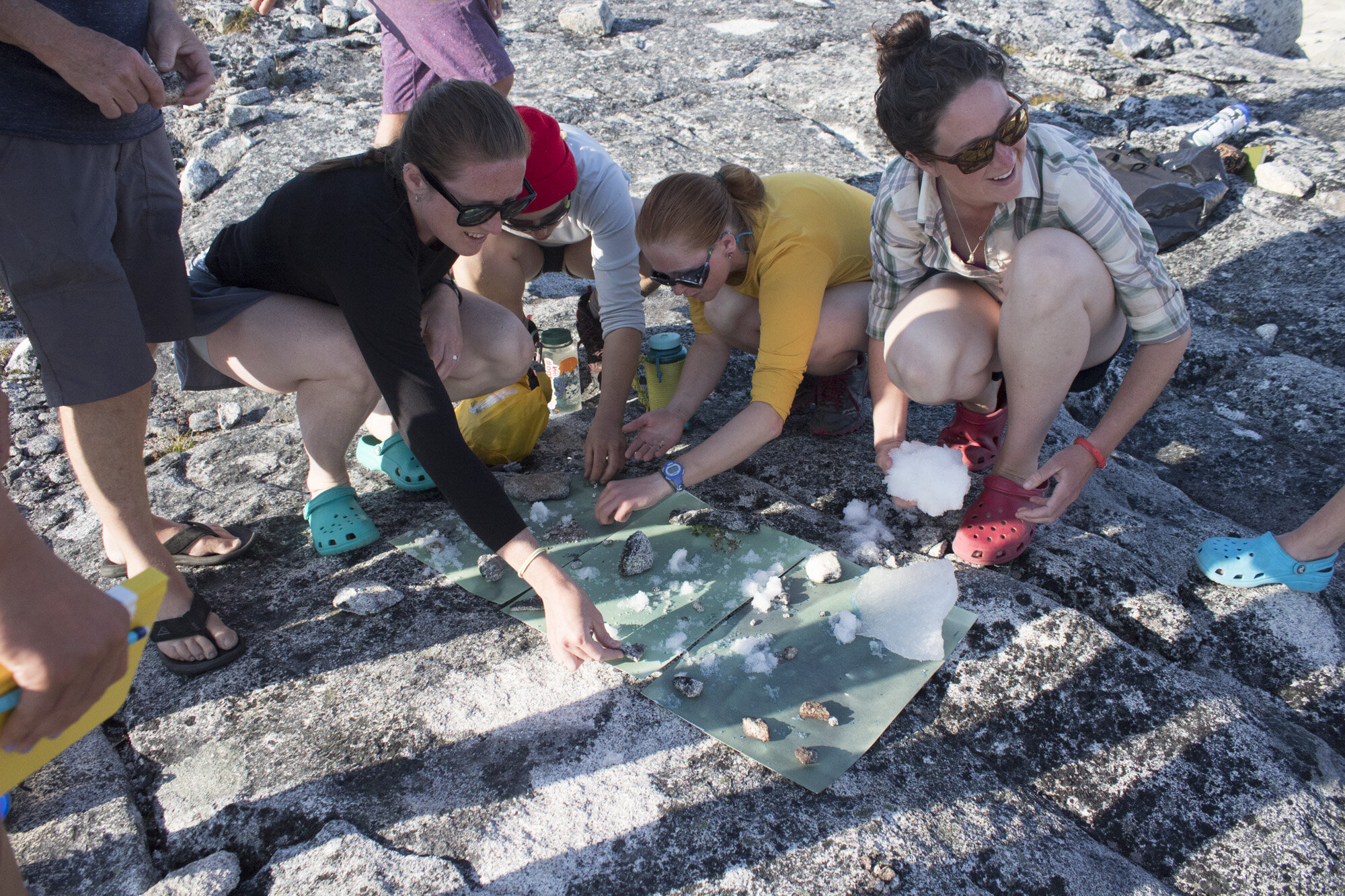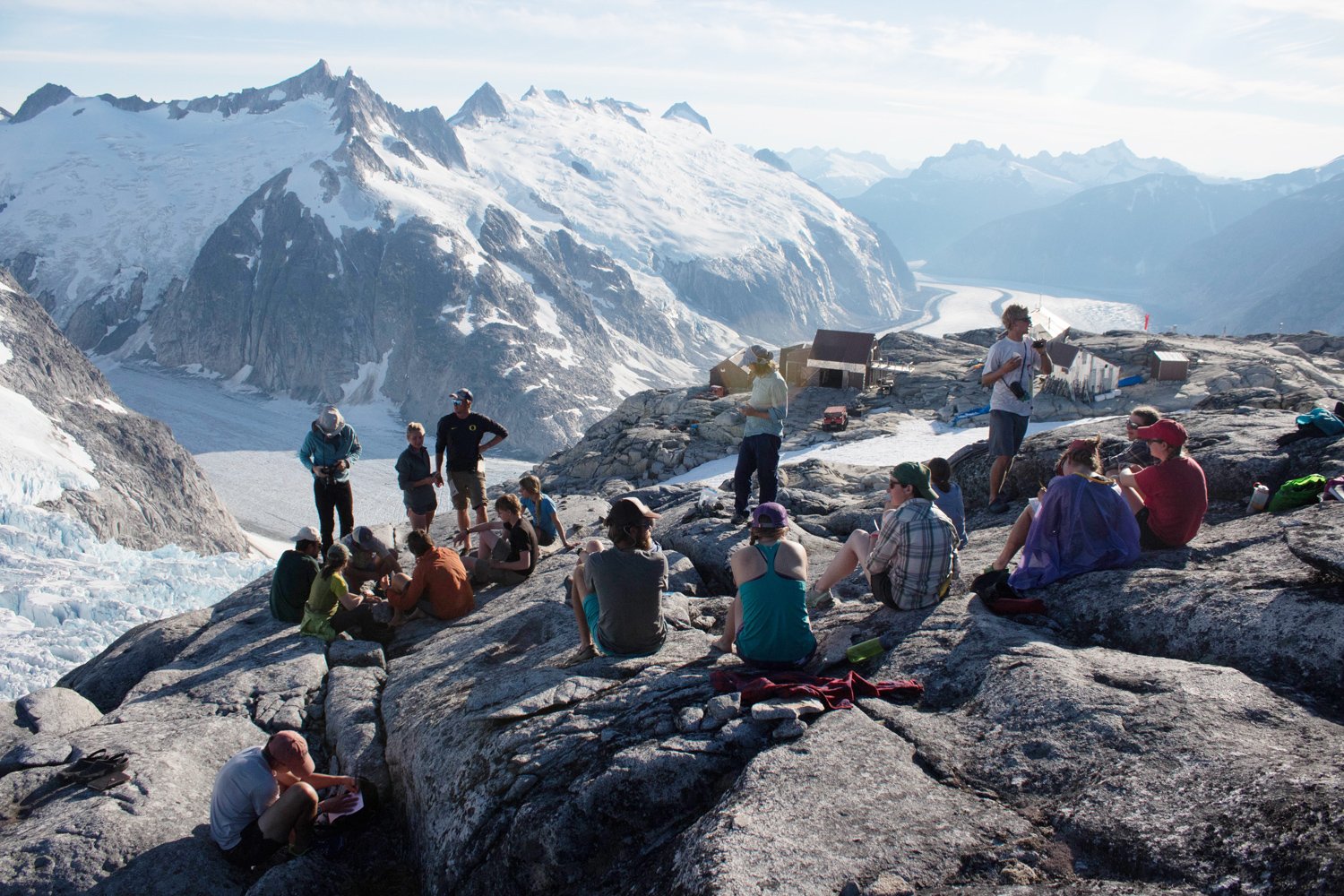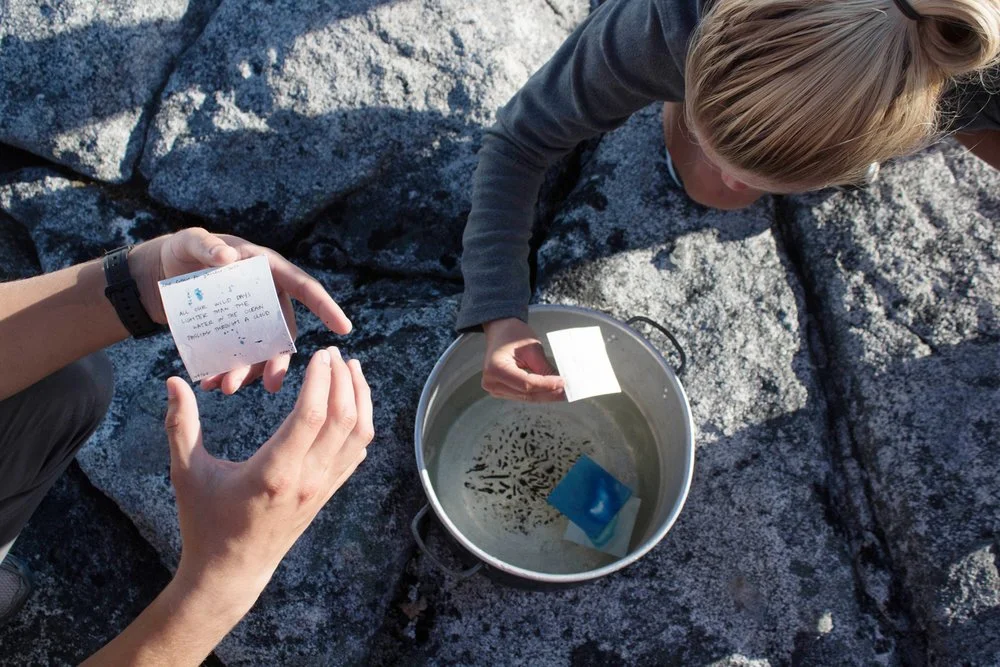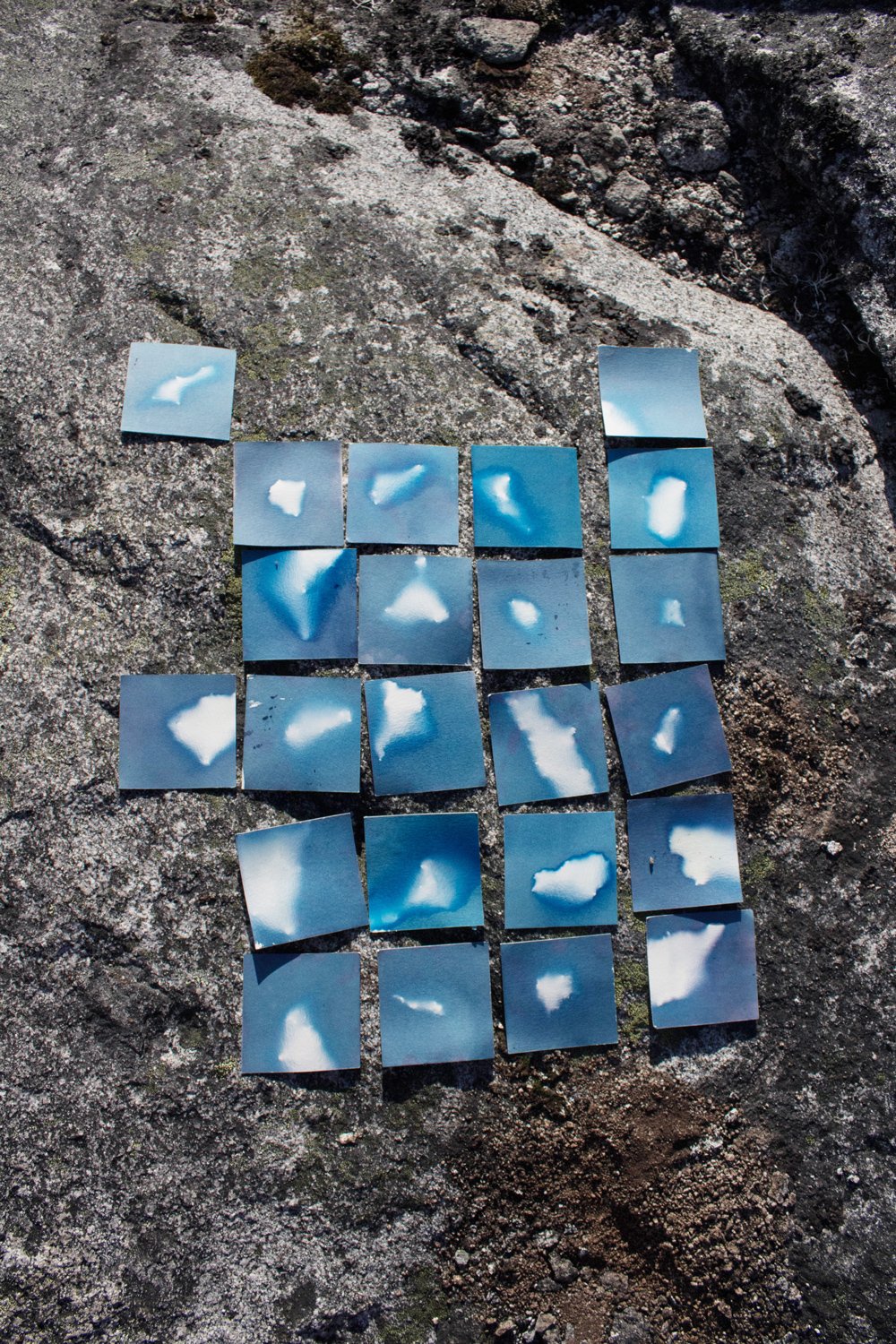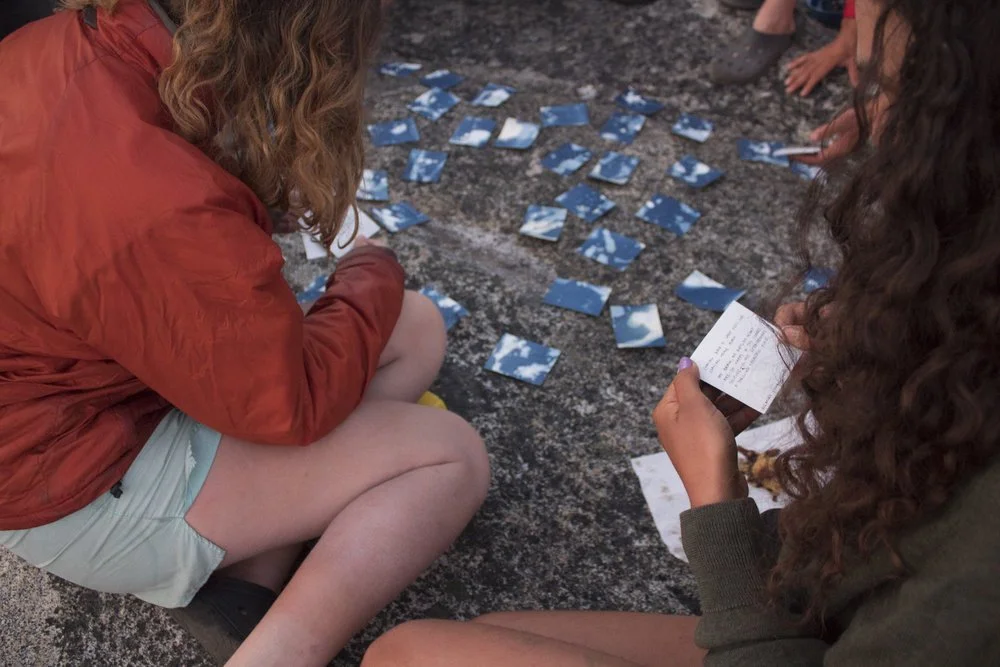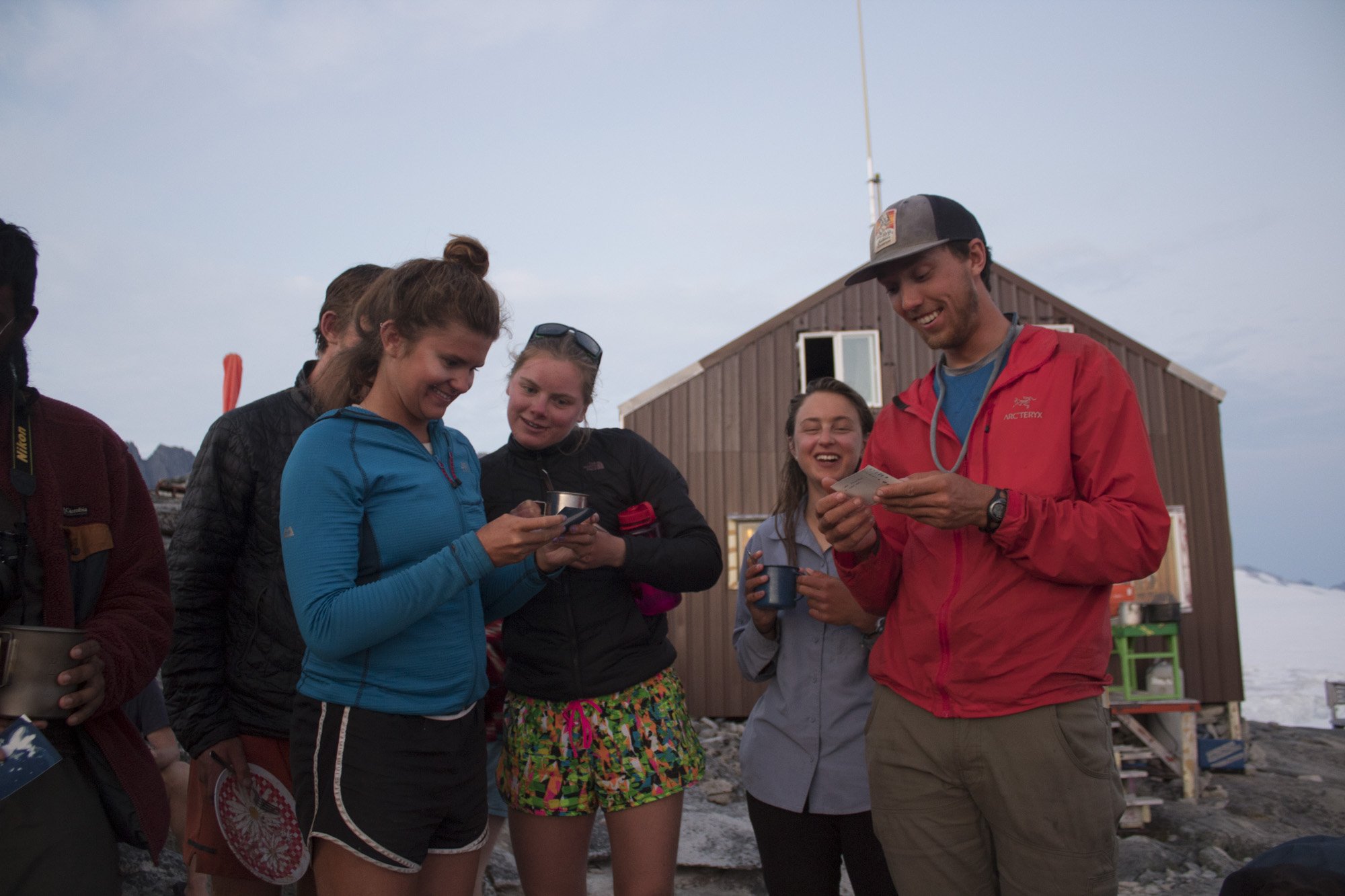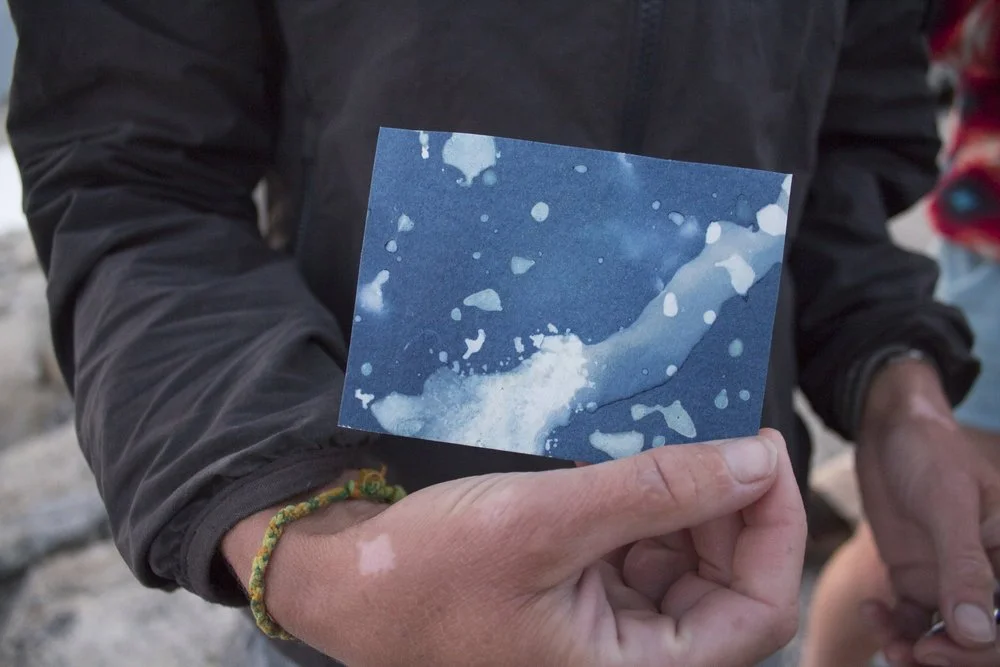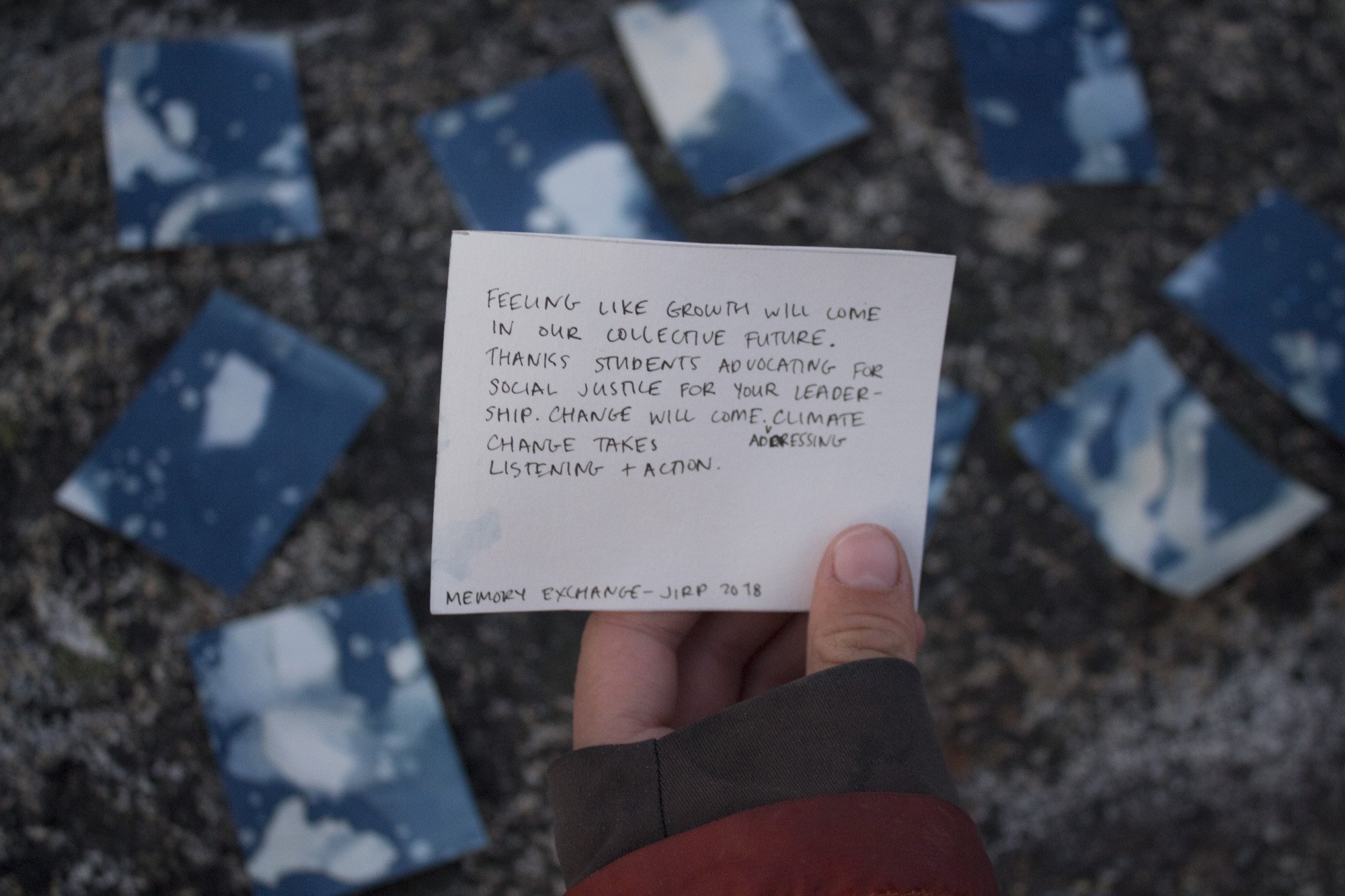juneau icefield research program
Summer Expeditions, 2017–present
The Juneau Icefield Research Program (JIRP) is an eight-week expeditionary research and educational program in Southeast Alaska. Participants (undergraduate, graduate, and high school juniors and seniors) traverse from Juneau, Alaska to Atlin, British Columbia while staying in a series of permanent camps along the way. During the traverse, students collaborate with leading scientists in a wide range of disciplines related to climate change.
I joined JIRP for the summer of 2017 as the inaugural Artist-in-Residence, and have since returned as Science Communication + Art faculty. Since 2018 I been working on JIRP’s leadership team year-round as Art Program Manager, and in 2020 I joined the Academic Council and co-founded the JEDI (justice, equity, diversity, inclusion) Committee. Collaborating with JIRP leadership, the Academic Council, and the JEDI Committee, I continually design and implement interdisciplinary science communication, storytelling, and arts programming each year.
Through research, engagement, and outreach, we encourage interdisciplinary learning in tandem with hard science topics. JIRP approaches science communication from many different angles – from documentary photography to science journalism to scientific illustration to abstract art-making. JIRP’s creative art program provides opportunities for all students to use art as a lens for understanding climate science, while studying glaciology and related topics through research and lessons led by faculty and staff on the program. Areas of study can range each year depending on Teaching + Research Faculty.
Art, Science Communication, and Storytelling on JIRP are fluid fields that promote diverse knowledge types and also connect to JEDI (Justice, Equity, Diversity, Inclusion) values and these efforts for JIRP now and in the future. This interdisciplinary methodology promotes a more inclusive approach to earth science by valuing different kinds of knowledge production and learning styles, and deepens the connections students have to both the quantitative and qualitative information. By incorporating art, storytelling, and science communication as valid ways of learning, experimentation, and outreach, JIRP prepares students to become leaders for climate science with a well-rounded educational foundation.
Field Sketching + Contour Drawing
Taking place across the Icefield, field sketching exercises cultivate strategies for recording scientific research and documenting experience. Topics range from lessons on perspective, to contour drawing, scientific illustration, note-taking, and shading. Specifically, blind contour drawing workshops emphasized the value of drawing as a way to foster close looking and deep observation, and to better record information and form of objects - from plants to rock formations to Icefield landscape. This practice helps scientists cement features to memory and more fully understand complex visual information.
interdisciplinary fieldwork
Participatory projects and interdisciplinary fieldwork facilitate creative engagement and deepens connections to each other, to field science, and to quantitative information. These types of collective projects also amplify diverse forms of knowledge production and ways of relating to place.
Please see Aquifer and Lighter Than the Water in the Ocean for more information about each project.
Cyanotype printing
Cyanotype workshops are taught in small groups throughout the summer. Each participant learned about the photographic process and experimented with different exposure techniques, such as traditional botany prints, abstract ways of using natural materials such as snow, and using highly absorbent scientific filter paper.
Watercolor Painting
Using the landscape as inspiration and material, workshops included basic techniques in watercolor painting (including paint-handling, brushes, color theory, and sketching), as well as strategies for observing and documenting information.
scientific illustration
Students learn visual skills to help them present their research to a wider audience by clearly communicate findings and complex concepts. Workshops in both hand-drawn and digital illustration help them better visualize date and research, and to use as a tool for science communication in presentations.
Examples of student work, all made on in the field with minimal access to digital tools:
participatory projects
Participatory projects and collaborative fieldwork facilitate creative engagement and deepens connections to each other, to field science, and to quantitative information. These types of collective projects also amplify diverse forms of knowledge production and ways of relating to place.
Please see Constellations and Love Letters for Glaciers for more information about each project.


